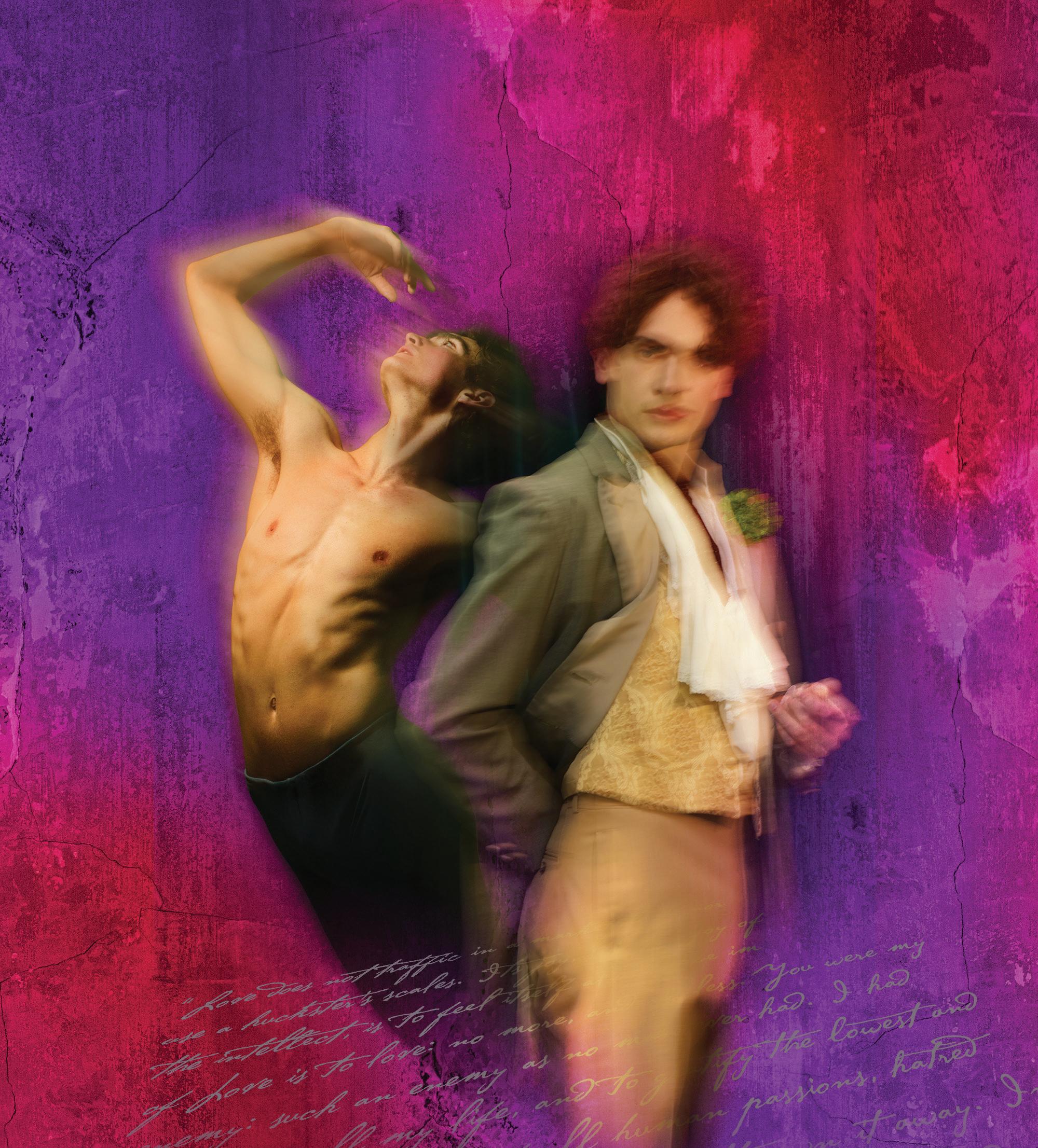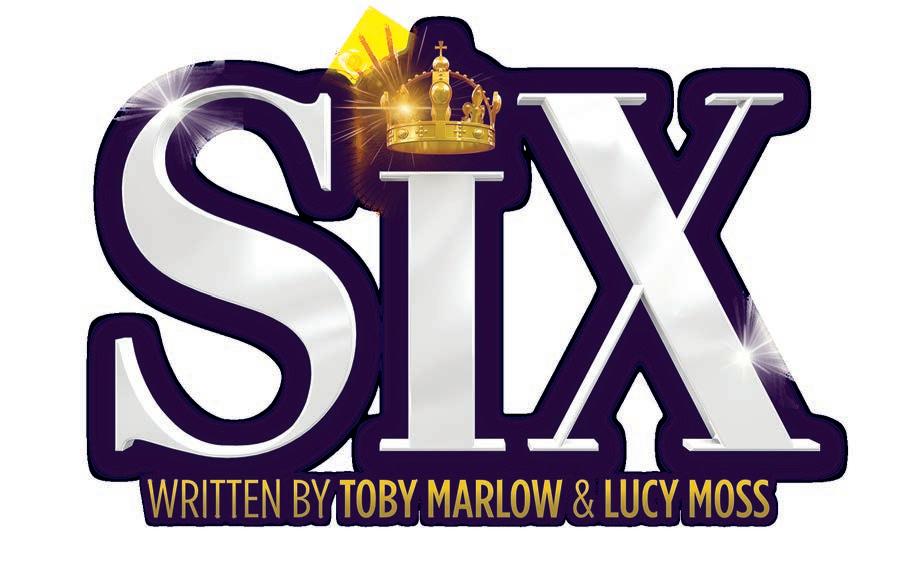














Dear City Hub readers,
The Albanese Labor Government’s economic plan is about helping people with their cost of living while fighting inflation and building a skilled, more productive and fairer nation.
Student debt relief
The Government is cutting 20 per cent from all student loans and making it easier to repay them, beginning July 1 next year.
At present you begin repaying the debt once you start earning around $54,000 a year. We will increase the threshold to $67,000 in 2025-26 so you don’t begin to repay the debt until you’re earning more.
We will also introduce a system where repayments are based on the portion of your income above the threshold level, so you pay less. A person with an average HELP debt of $27,600 will see around $5,520 wiped from their outstanding HELP loans next year.
This builds on the changes we have already made to ensure student debts don’t grow faster than average wages.
Anyone with HELP, VET Student Loan, Australian Apprenticeship Support Loan or student support loan debts will benefit.
All up, we are wiping close to $20 billion off student debt.
Guaranteeing fee-free TAFE for skills in demand
We are introducing legislation to ensure there are 100,000 fee-free TAFE places each year from 2027.
This builds on the Albanese Government’s partnership with states and territories which has already delivered more than 508,000 enrolments in courses like disability and aged care, digital tech, construction and early childhood education.
Landmark legislation to enable the federal government to properly fund public schools
We have just passed landmark legislation in the House of Representatives to increase funding for public schools. For the first time it will allow the federal government to ensure our public schools are fully funded and tie that funding to reforms to help students catch up, keep up and finish school.
Over the last eight years the percentage of students finishing high school has dropped, from 83 per cent to 73 per cent in public schools.
We need to turn this around and that’s what this legislation is about.
The Better and Fairer Schools (Funding and Reform) Bill 2024 enables the Commonwealth to lift its share of funding to public schools above the 20 per cent limit introduced by Malcolm Turnbull.
The Albanese Government has put $16 billion of additional investment for public schools on the table to help fill that gap.
This is the biggest extra investment in public education by the Australian Government in this country’s history.
Better pay for early childhood educators and fee caps
We have also introduced legislation to make sure early educators are fairly paid.
The Wage Justice for Early Childhood Education and Care Workers (Special Account) Bill 2024 will deliver funding for a 15 per cent wage increase and will be tied to a commitment from child care centres to limit fee increases. We want to make sure workers can be fairly paid without the costs being passed on to families.
From August 2024 centres that receive funding for the wage increases won’t be able to increase their fees by more than 4.4 per cent over the next 12 months. There will also be a limit on fee growth in the second year of the wage subsidy.
We’re working hard to get inflation back to where it should be so that you get to earn more, and keep more of what you earn, and don’t pay more than you should.
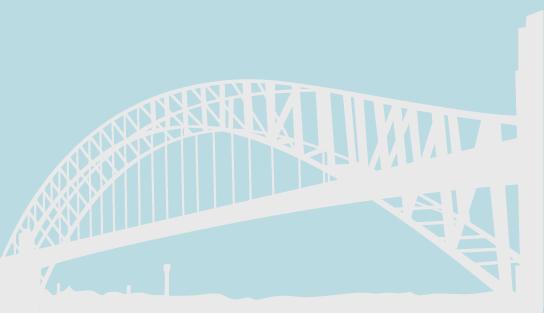
Vigil after uni councillors rip up sexual violence report
(See p.6)
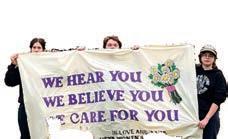

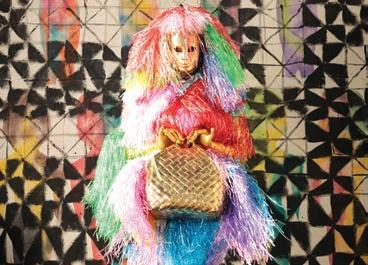
HUBARTS: SYDNEY COMES ALIVE
Sydney Festival unveils huge 2025 program
(See p.20)
Published monthly and freely available throughout the Inner City.
Copies are also distributed to serviced apartments, hotels, convenience stores and newsagents throughout the city.
Distribution enquiries call 9212 5677. Published by Altmedia Pty Ltd. While every effort is made to ensure accuracy of content, we take no responsibility for inadvertent errors or omissions.
ABN 52 600 903 348
Group Editor & Publisher: Lawrence Gibbons
Publisher Assistant: Mal Moody
Advertising Manager: Mal Moody 0484 042 615 Karl Germann 0467 472 563
Advertising: sales@altmedia.net.au
Managing Editor: Chloe Sargeant
News Contributors: Christine Lai, Fred Rahi, Lydia Jupp, Maja Janc, Michael James, Naomi Lawrence, Will Thorpe
Arts Contributors: James Bale, John Moyle, Maja Janc, Mark Morellini, Rita Bratovich
Cover Photo: Michelle Grace Hunder
Designer: Nadia Kalinitcheva
Mail: PO Box 843 Broadway 2007
Email: news@altmedia.net.au, arts@altmedia.net.au
Ph: 9212 5677 Fax: 9212 5633
Website: www.cityhub.com.au
If you have a story, or any comments you’d like to share with us: news@altmedia.net.au
@CityHubSydney
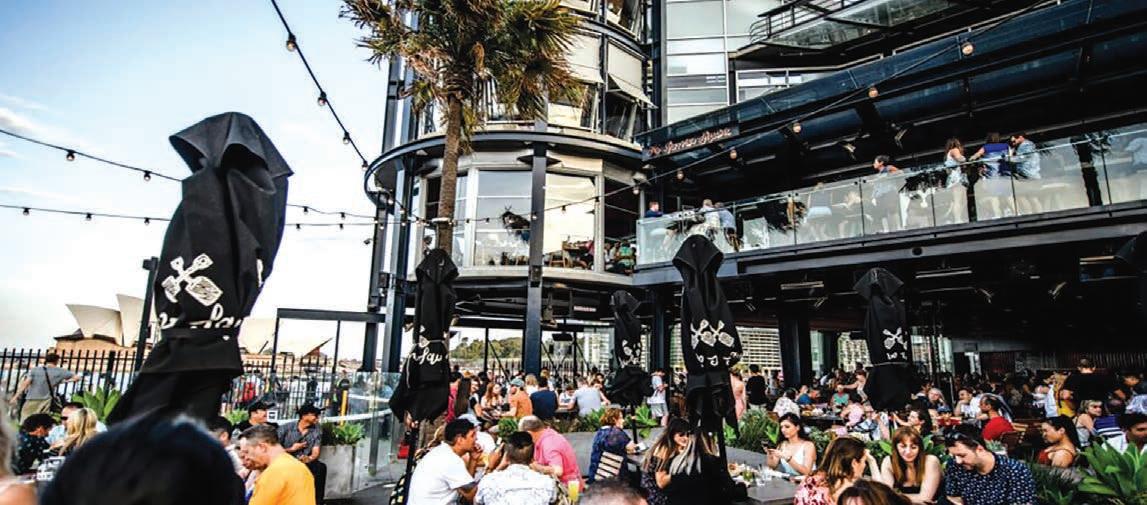
BY FRED RAHI
As Sydney’s vibrant nightlife grapples with the aftermath of strict lockout laws, The Squire’s Landing, located in The Rocks, is making the move to become a 24-hour venue.
The decision has sparked concern from residents of one of Sydney’s most prestigious buildings, Bennelong One — commonly known in Sydney as ‘The Toaster’ — which is located 400 metres across the water from the iconic bar.
The NSW residents argue that late night noise from the venue is a disruption to their sleep schedules and early bedtimes, saying residents already experience noise that “significantly impacts” their “peace and quiet”, in particular trying to sleep between 9.30-10pm.
The waterfront venue’s plan, strategically positioned near the Harbour Bridge and the Opera House, aims to boost Sydney’s nightlife by extending its trading hours for a trial period.
This move is part of the state government’s broader initiative to rejuvenate the city’s after-dark economy, which has suffered since the implementation of the lockout laws aimed at curbing alcohol-related violence.
BENNELONG ONE RESIDENTS SUBMIT LETTER CITING NOISE CONCERNS
Approximately 20 residents from the Bennelong One building recently submitted a letter to the Department of Planning to oppose the application.
They expressed concerns about the noise, stating, “This noise significantly impacts resident peace and quiet enjoyment of their habitat as well as their health and wellbeing.”
The location of “The Toaster” amplifies the issue as there are no buildings to interrupt the soundwaves and, as residents pointed out, the sound travels faster over water.
While the residents’ worries are valid, it’s essential to also consider the broader context. Sydney’s nightlife has been in decline for years, whether it be due to lockout laws or the COVID-19 lockdowns.
We understand residents’ concerns but they have to remember [they’re] living in a global city
Advocates for the Squire’s Landing argue that extending operating hours could invigorate Sydney’s nightlife, contributing to an exciting atmosphere that brings local residents and tourists together.
“Look, we understand the residents’ concern but they have to remember they are living in a global city,” said Paul Nicolaou, a representative from Business Sydney.
“We can’t have a city that closes at 9pm at nighttime, we are a global international city we need to be a 24-hour city and people want it... Our CBD and surrounding areas are entitled to have that chance.
“It’s about time that Sydney opens up.”
Supporters of the venue’s application assert that 24-hour trading would enhance Circular Quay’s vibrancy and activity. The Squire’s Landing’s application states, “Given the venue’s location in proximity to public transport and the cruise terminal, it is an ideal meeting spot for a variety of group types and sizes.” However, they have not proposed new noise mitigation measures, which raises questions about how they plan to address residents’ concerns.
The NSW Police have also weighed in, citing existing noise complaints from the area and calling for strict limits on sound levels during the night.
The government has acknowledged that living in the city centre comes with the understanding that some noise is inevitable, as expressed by Night time Economy Minister John Graham. He remarked, “If you are living in the centre of Sydney, it goes with the territory that there’s a little bit of activity including after dark — that’s how it should be.”
The City of Sydney said that they are committed to balancing the needs of local businesses and residents, as it seeks to support the night time economy. The council spokesperson stated, “These proposals would make it easier and cheaper for venues to trade later, while balancing the sound management needs of businesses and residents.”
While the residents’ noise concerns are valid, the potential benefits of restimulating Sydney’s nightlife are also worth considering.
BY CHRISTINE LAI
Sydney residents may see their red rubbish bins go uncollected in just six years as landfill space is projected to run out, prompting the state government to declare that urgent action is needed.
The NSW Labor government has warned that a decade of inaction by previous administrations has left Greater Sydney on the verge of a waste crisis. Without intervention, landfill space is expected to run out by 2030.
The state of NSW’s waste and recycling was made public on November 1 at the NSW Circular Economy Summit in Sydney, hosted by NSW Environment Minister Penny Sharpe and NSW Environment Protection Authority (EPA) CEO Tony Chappel.
The Summit gathered representatives from industry, environmental groups, local government and state government
to address the challenges and opportunities facing the state.
Without new waste and recycling solutions, Greater Sydney’s landfill capacity is set to be exhausted within the next decade. This landfill issue would significantly drive waste management costs up for households and businesses.
we can fix the problem and create a more sustainable future
NSW Minister for Environment Penny Sharpe emphasised the urgent need for government action, stating, “Sydney is running out of landfill space and our recycling rates have stagnated. We are at a point that if we don’t take urgent action, our red bins won’t be able to be collected in a few years.”

“Previous Governments were briefed on this issue, and there was no action for over a decade. Industry and councils have been crying out for support and leadership. We’re stepping up to the plate.”
According to the NSW Environment Protection Authority, during the 202223 financial year period, a total of 22.4 million tonnes of waste was generated, exceeding the five-year average of 21.9 million tonnes.
This increase was primarily due to higher amounts of commercial, industrial, and construction waste, while municipal solid waste experienced a slight decline
compared to the previous year.
The overall recycling rate in NSW for 2022-23 stood at 66 percent, reflecting an increase from the 2015-16 baseline of 63 percent. However, this is not nearly enough.
The EPA has reported that the recycling rate has plateaued while waste generation has continued to increase since 2015.
“We know the public wants to see less waste in landfill, use less plastic and support recycling and we want to help them do their bit. Together we can fix the problem and create a more sustainable future,” said Minister Sharpe.
BY MAJA JANC
In 2009, the New South Wales Aboriginal Land Council filed a land claim for all of Little Ashton Park, a 8280-square-metre public space in Mosman which overlooks Sydney Harbour.
This land claim has been unchallenged for 15 years, until this week. Mosman Council has now been forced to respond to the claim by the Department of Crown Lands, which manages the land owned by the government of NSW.
The claim should be denied, says a Mosman Council spokesperson
Little Ashton Park, located near Taronga Zoo in Sydney’s affluent North Shore, is currently used by the public. Land claims are made possible through the NSW Government’s 1983 Aboriginal Land Rights Act, are measured and assessed against certain criteria, including whether the land is “not lawfully used or occupied” and if they “are not needed, nor likely to be needed, for an essential public purpose.”
A Mosman Council spokesperson said in a statement that ‘the claim should be denied’, because the park is currently used in a “lawful” manner by the community for “essential public purpose.”
Under the Aboriginal Land Rights Act 1983, Aboriginal Land Councils have a
legal right to lodge land claims on Crown Land, but not all claims are accepted. If the land claims are successful, Crown Land gets returned to Aboriginal ownership.
Out of the 782 land claims that were filed in the 2022/23 financial year, 776 claims were resolved. Of these, 545 were granted or partially granted.
“For all the resources, minerals,
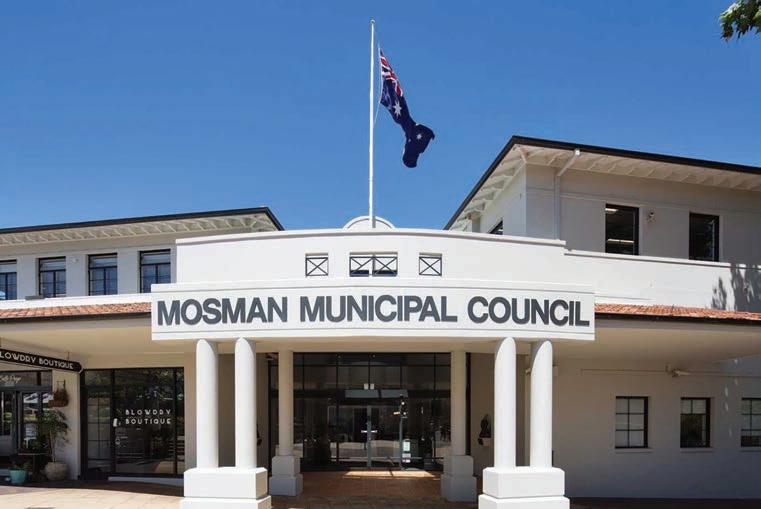
freehold private land, pastoral lands, licensed lands, all lands other than crown lands were off the table,” Chief Executive of the Metropolitan Local Aboriginal Land Council Nathan Moran told The Australian
“But what was left in land rights was the ability to make claims on it. We’re only allowed to receive land that’s not required by either the state or local governments … for essential public purposes.”
On October 11, 2024, Environment Minister Tanya Plibersek blocked a proposal for the development of a gold mine near Blayney, citing the financial gain of the mining company will not outweigh the “irreversible damage and permanent loss” to important Aboriginal cultural heritage sites.
Minister Plibersek had aligned her decision with the Wiradyuri Traditional Owners Central West Aboriginal Corporation.
The NSWALC also urged Premier Chris Minns to lobby for changes to the Environment Protection and Biodiversity Act, which would facilitate recognition for them as the only Indigenous representatives on the matters of environmental protection and cultural heritage.
BY NAOMI LAWRENCE
Amonth after thousands of mysterious “tar balls” washed ashore Sydney, creating widespread confusion and closing several beloved beaches for cleanup, a team of scientists have finally unveiled their slimy composition.
Scientists across disciplines from University NSW have spent the past week sampling and analysing the black golf ball-sized orbs which were first spotted in Coogee, and later across several other beaches including Bondi, Bronte, Tamarama and Maroubra.
It was found that the ‘tar balls’ composition was actually much closer to “human generated waste” and not solely formed from oil spill run-off as originally diagnosed.
The balls’ materials are far cruder, containing almost a hundred different components, according to Associate Professor Jon Beves from UNSW’s


Ph: (02) 9517 2800
E: newtown@parliament.nsw.gov.au
W: jennyleong.org
383 King St, Newtown NSW 2042
Chemistry department. The components include molecules stemming from cooking oil and soap scum – specifically, post-shower dirt, oil and skin – along with faeces, PFAS chemicals, steroidal compounds, pesticides and even veterinary drugs.
Through radiocarbon dating it was found that the balls are made up of roughly 70 percent carbon and 30 percent fossil carbon. Professor Beves explained that modern carbon likely comes from carbon derived from plants and animals.
Tar ‘balls’ composition is much closer to “humangenerated waste”
“The higher concentration of modern carbon at the surface may result from the loss over time of components that evaporate more easily,” he said. Further analysis of elements including an X-ray showed that the balls had “significant levels of calcium
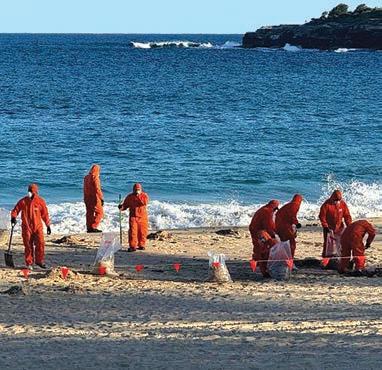
present which might have helped bonding the organic components into stable, water-insoluble masses according to Professor William Alexander. The analytical chemist also suggested that the presence of fats, oils and calcium could mean the black balls are similar to “fatbergs” or solidified fat and grease (FOG) blobs typically found in sewage systems.
origins of the balls remain unknown. “Carbon-14 dating suggested they weren’t purely from an oil spill but contained markers of human faecal waste, THC, and industrial PFAS chemicals likely from sewage and other urban effluent origins” said Professor Donald.
The NSW Environment Protection Authority (EPA) along with NSW Maritime, Randwick City Council and scientists are still further investigating the incident.
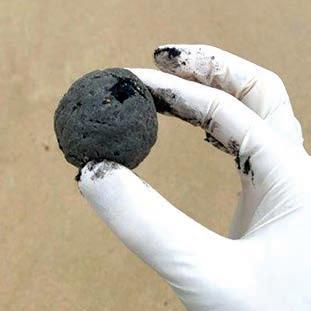
Sydney Water confirmed no issues were caused at Bondi or Malabar water facilities and Transport for NSW Maritime found no correlating weather anomalies for further explanation.
Despite these insights, the exact
The origin of these sticky black blobs posing a threat to marine biodiversity remains unknown.
After over a decade of campaigning locally in Newtown and across the state, the NSW Parliament has finally passed laws to ban unfair no grounds evictions.
Once the changes come into effect in early 2025, landlords will no longer be able to evict tenants without a reason, regardless of whether they’ve always paid rent on time or looked after the property.
Instead, they’ll have to give one of a specific list of reasons including undertaking major renovations or works to the rental home or moving back in themselves. Landlords will also have to provide evidence to support their reasoning, and will face steep financial penalties if they provide false or misleading evidence when providing a reason for terminating a lease.
These changes will make a huge impact on the housing security and stability of the more than two million people who rent in NSW, and are the bedrock on which we can continue to build for more protections for renters - like minimum energy efficiency standards and
controls on rent increases.
The long-overdue reforms are also a gamechanger for all the renters who hesitate to challenge a rent hike out of fear of a retaliatory eviction, and everyone living in substandard conditions who is afraid to ask for essential repairs or maintenance.
These changes wouldn’t have been possible without years of consistent pressure and campaigning from tenants’ advocates, housing experts, grassroots groups, activists, legal centres, unions and The Gree ns to keep renters’ rights on the agenda.
When I first put my hand up to be the Member for Newtown over a decade ago, I committed to getting these reforms done. Now, thanks to the thousands who backed our campaigns to expand renters’ rights and end no grounds evictions we’ve finally seen MPs from all sides of politics finally back this critical reform.
The new rental laws will also affect the way people in rentals can request permission to
keep a pet, limit rent increases to one per year for all lease types, and make it illegal for tenants to be billed for their own background check.
Want to know more about what the changes will mean for you? Join our renters’ town hall at the Inner West Pride Centre at Newtown Town Hall at 5.306.30PM on Tuesday 3 December to learn more.
RSVP using the QR code below or visi t: jennyleong.org/renterstownhall.

Jenny Leong MP Greens Member for Newtown
BY WILL THORPE / LYDIA JUPP
Student councillors-elect at the University of Sydney have made headlines for tearing up copies of a major report on sexual violence at residential colleges, called The Red Zone Report, during a meeting on 30 October.
Two incoming student representatives ripped up the 2018 Red Zone Report whilst some of their fellow electees laughed. Another threw pieces of the torn-up paper at other incoming councillors who had responded by heckling the offending contingent.
The involved students are understood to be members of the Young Liberals and the university’s Conservative Club.
Members of the contingent also yelled out denouncements of the report, one remarking “No one cares.” Two members of the Liberal contingent did not participate in the incident.
The incident was captured on video – it was live-streamed in its entirety by USYD’s student newspaper, Honi Soit. The attendees – including the contingent who ripped up and threw the report – were aware the meeting was being recorded
One of the councillors-elect, who laughed as the report was ripped up, later dismissed it as outdated, saying that “statistically women are less likely to be raped at a college campus than in the real world.”
Some of the students involved were elected on a ticket representing college students.
The Red Zone Report, created by national advocacy group End Rape On Campus, investigates the deeprooted culture of misogyny, racism and homophobia at college campuses across 12 Australian universities.
In a statement posted to the group’s Instagram, authors of the report Nina Funnell and Sharna Bremner said the report “speaks to the very real and ongoing trauma of individual students and families who were named and quoted in the report- students and families who continue to carry the scars of violent experiences at the colleges.”
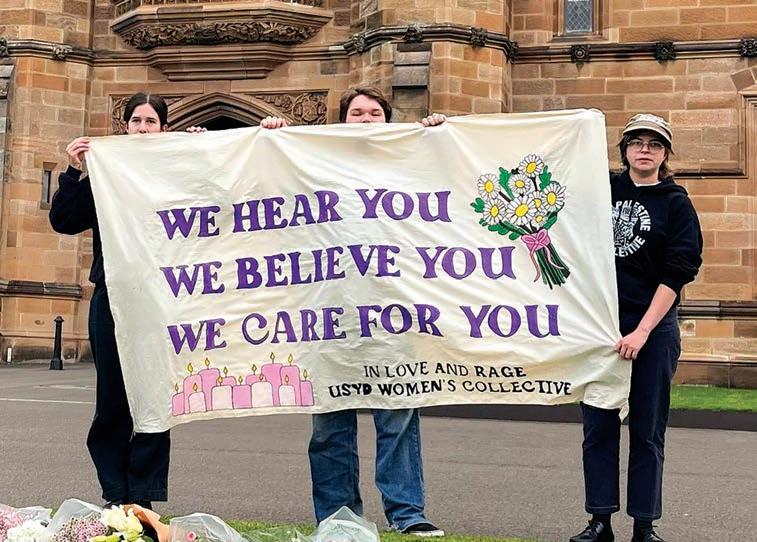
The 200 page report published numerous instances of homophobia at residential colleges, including the burning of a rainbow flag on the grounds of St Andrew’s College the night after a college formal in 2016.
Any behaviour that mocks victim-survivors is absolutely unacceptable & we are initiating an immediate inquiry

Queer students who live on campus described the fear they felt at the prospect of coming out, with research showing the common use of homophobic slurs, and the sexualisation of queer, bi, and lesbian women. The report emphasised the strict regulation of sexuality in colleges, and the way students are pressured to perform heterosexual acts, forcing queer students to conform or repress their sexuality.
Earlier this month, six students were expelled and 21 were suspended following a hazing incident at the University of Sydney-affiliated St. Paul’s College which involved acts of sexual degradation and humiliation.
The number suspended or expelled added up to nearly ten percent of the college’s undergraduate population
witnessed last night was the worst of so-called ‘student representatives’; it was frankly inhuman,” Fisher remarked.
Fisher stated that 246 reports of sexual misconduct were made to the university last year, double the 2022 figure.
On the evening of the November 5, the University of Sydney Women’s Collective held a vigil in solidarity with survivors of university sexual violence, and to remember those who had been lost.
Over 100 students and community members attended the vigil, where they lit candles, laid flowers, and wrote messages of love and support for victimsurvivors. Outgoing Women’s Officers for 2024 and those elected for 2025 addressed attendees, and spoke of the importance of the survivor community.
“There’s so much power in speaking out, in sharing stories, and in standing up to institutional power, but there’s also so much power in healing and building community,” said incoming Women’s Officer Martha Barlow.
“In this fight, one of the most important things we can do is be there for each other.”
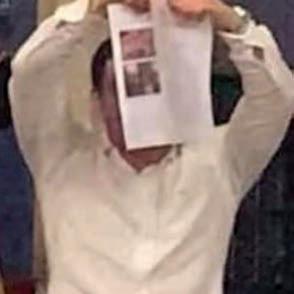
In a statement reported by Honi Soit, University of Sydney Deputy-Vice Chancellor (Education) Joanne Wright reminded student councillors of “their obligation to manage their meetings with sensitivity and respect” and said the university takes action when it determines this obligation to be breached.
“Any behaviour that mocks victim survivors or ignores the impact of trauma resulting from sexual misconduct is absolutely unacceptable and we are initiating an immediate inquiry,” said Wright.
President-elect of the university’s Students’ Representative Council Angus Fisher put out a statement strongly condemning the actions. “What we
Other speakers for the vigil included Gumbaynggirr, Dhungutti and Bundjalung warrior and poet Lizzie Jarrett, What Were You Wearing founder Sarah Williams, and Member for Newtown, Jenny Leong.
In a video published by Honi Soit, Leong criticised the lack of institutional action taken by the university and advocated for the colleges’ dissolution.
“How many more reviews and recommendations and independent assessments do we need to get to the point where we accept that sexual violence and rape on campus is not acceptable? What we need is the university leadership to recognise that there is no solution to dealing with the toxicity that exists in those colleges other than to abolish them.”
The University of Sydney and the New South Wales Liberals are investigating the students responsible for destroying the report.
BY MAJA JANC
Sydney Airport and Melbourne Airport have just announced a joint campaign geared towards helping victims of human trafficking and modern day slavery. The campaign will help people spot the signs of human trafficking in airports, and direct them on how to make a report.
The campaign is in collaboration with global anti-human trafficking organisation, A21, with information and guidance from the Australian Federal Police (AFP).
The ‘Can You See Me?’ campaign will include electronic signs and billboards that will have QR codes with information, the phone number to the AFP, and the slogan “If you suspect it, report it.”
The campaign is intended to encourage passers-by to be able to recognise the signs of potential trafficking and to report suspicious
activity and behaviour to authorities to keep victims safe.
Nick Caine, A21 CEO, said, “Everyone has a role to play in the fight against human trafficking. Awareness is the first step, and we believe that through this campaign, more victims will be recognised and rescued. ”
“Every person who steps through our airport deserves to travel safely, without fear of exploitation,” said Scott Charlton, Sydney Airport CEO.
‘EVERYONE
The electronic signs and billboards are to be displayed at high-visibility areas like check-in counters, gates, and baggage carousels.
The Sydney Airport’s website has listed the airport-specific indicators of human trafficking, which include:
• a person avoids eye contact and social interaction
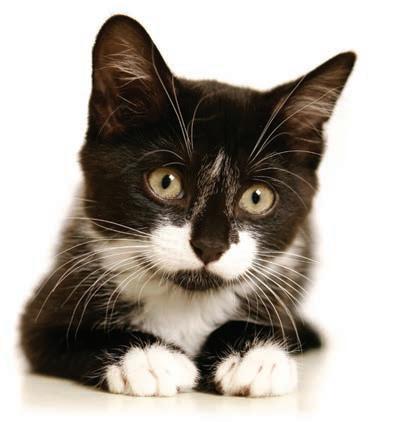
• is not in control of the own passport or documentation
• has a language barrier with their travelling companions
• is unusually submissive and quiet
• is potentially unaware of their destination
• or their clothing is not appropriate or does not suit the route of travel.
Everyone has
a role to play in the fight against human
trafficking
During the campaign, around 7 million passengers are expected to pass through both the domestic and international terminals at both airports.
From 2023 to 2024, the APF received 382 reports of modern slavery or trafficking, which is a staggering 12 percent increase from the previous year.
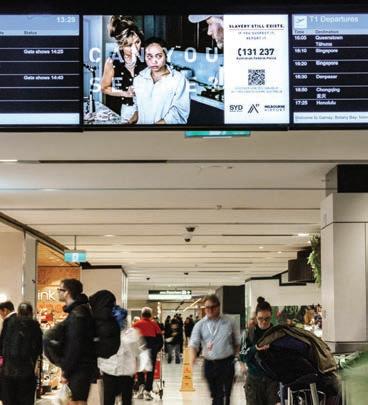
The reported cases include trafficking, forced marriage, sexual exploitation, domestic servitude, debt bondage, forced labour, deceptive recruitment and organ trafficking.
According to the Global Slavery Index, an estimated 41,000 people in Australia live under conditions of modern slavery.
If you suspect someone is at risk, you can, make an anonymous report through Crime Stoppers on 1800 333 000, call 131 AFP (131 237) or make a report through the AFP website.
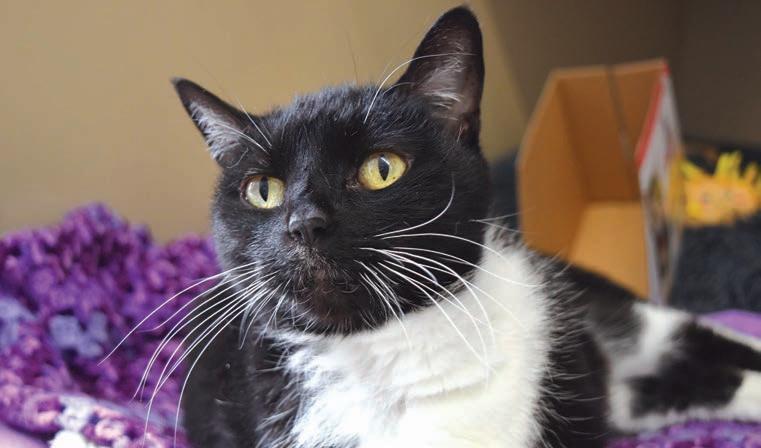
Precious Pepper is a senior feline looking for her own little bit of paradise where she can rest her paws and enjoy some peace and quiet. You’re sure to be impressed - Pepper is full of purrsonality and will happily supervise your sofa and patrol your pillows. An independent kitty Pepper lives life on her own terms but she’s always happy to have a chat and still enjoys her playtime too. Pepper would prefer an indoor-only forever home and wants to be the only furry family member in the house, no other cats and definitely no dogs. Better get cracking and come meet her, Pepper is no run of the mill kitty! INTERESTED IN
BY MICHAEL JAMES
The NSW Police Force have released the findings of an internal review, which recommends realtime digital tracking of police firearms to prevent future misuse and address public safety concerns.
The review was launched in February 2024, in the wake of the tragic deaths of Jesse Baird and Luke Davies, allegedly at the hands of former Senior Constable Beau Lamarre-Condon.
Lamarre-Condon is alleged to have taken a police-issued handgun home three days before it was used in the fatal incident at a Paddington residence.
NSW Police state that the firearm was checked out from Miranda police station on February 16, intended for use at a Sydney protest.
However, it remains unclear if Mr
Lamarre-Condon was on duty at the event.
Prompted by this incident, Police Commissioner Karen Webb requested Victoria Police to conduct an independent assessment of NSW Police firearms protocols. This decision came amidst growing concerns over potential gaps in weapon tracking and storage procedures within the force.
In a statement, Commissioner Webb highlighted the importance of external insights.
“While the work is not yet complete, I am confident the review and its recommendations represent a clear path for improvement in this area,” she said. “It was particularly important to gain the insight and expertise of Victoria Police
and other external partners to ensure we implement best practice going forward.”
The review, led by Deputy Commissioner Peter Thurtell APM, involved consultation with both internal and external stakeholders, resulting in several key recommendations.
The review emphasises the need for real-time monitoring of police-issued weapons
These include the establishment of an “arms and appointments manual” to provide definitive guidelines for the approval and transport of firearms away from police stations.
Additionally, the review emphasises the need for a digital firearms movement register, enabling real-time monitoring of police-issued weapons.
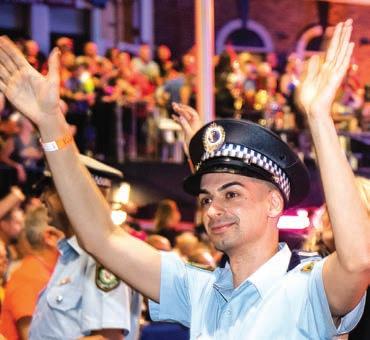
The NSW Police Force is now focused on implementing these measures, with Commissioner Webb confirming that efforts are “ongoing.”
She emphasised that while the revised procedures would increase security, there are limitations to any system. “There will be no process or system that is 100 per cent foolproof,” she stated. “What we are doing is ensuring the procedures are in place to mitigate [risk].”
BY CHRISTINE LAI
Sydney residents must brace for a 50% increase in water bills over the next five years — meaning hundreds of dollars annually per household — as Sydney Water addresses challenges related to the city’s rapidly growing population.
If NSW meets its housing targets, an additional 300,000 dwellings will require water infrastructure by 2029, resulting in a demand of 50,000 kilometres of new pipes.
These cumulative price increases may disproportionately impact vulnerable communities
The state-owned water supplier has proposed an 18% hike in rates for the upcoming financial year, followed by annual increases of 6.8% plus inflation. This adjustment aims to generate over $26 billion for upgrading and maintaining infrastructure.
The planned operating expenses over the next five years are considered crucial for maintaining safe and reliable water, wastewater, and stormwater services. This proposed spending is deemed the
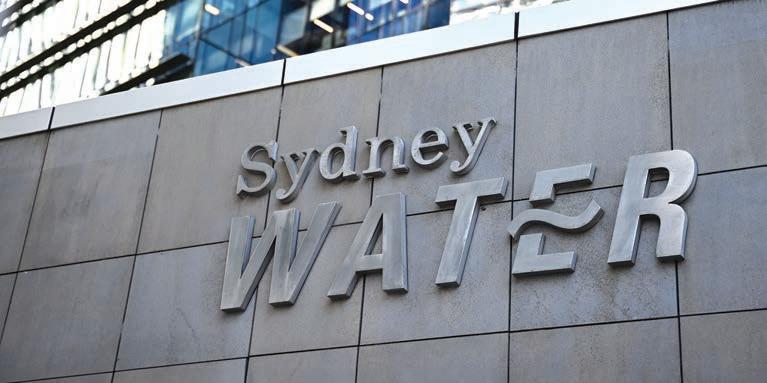
minimum required to ensure essential services both now and in the future.
In its 10-year investment forecast, the organisation reviewed multiple scenarios and concluded that a balanced approach of $32 billion will help minimise costs for customers while improving resilience and adaptability in a complex environment.
According to The Australian Energy Regulator (AER), the average monthly electricity bill for a typical household as of April 2024 was around $165 ($1,979 per year).
The report forecasts an average water bill increase of about $226 in the first
year, with subsequent annual increases of approximately $111 until 2029-30.
An average water bill of $1,308 is projected to rise to $2,037 by the 2029-30 financial year.
Premier Chris Minns urged the chair of IPART to take into account “the cost-ofliving impacts of the price determinations” as well as the effectiveness of rebates.
“The Government understands that Sydney Water and Hunter Water will lodge their submissions shortly, which may propose increases to their customers’ bills.

This information is part of a comprehensive 546-page submission to the Independent Pricing and Regulatory Tribunal (IPART).
These increases will place additional strain on Sydney families already facing a cost-of-living crisis, compounded by rising prices on other utility bills.
In a letter released by the government,
“NSW Households are currently experiencing increasing costs of living pressures, including rising housing and utility expenses. These cumulative price increases may disproportionately impact vulnerable communities.”
Minns requested that IPART explore options for adjusting project timelines to minimise price impacts.
Sydney Water acknowledged the financial strain of rising living costs on customers and committed to supporting individuals through payment assistance programs and rebates.
The organisation also noted the need to raise funds to support growth in an area comparable to the size of Canberra.
The proposed increases are set to take effect in June next year.
BY FRED RAHI
High-rise living in Sydney often comes with a hidden bylaw that has residents frustrated and questioning priorities: no drying laundry outdoors.
Many apartment complexes enforce bylaws that prevent residents from hanging clothes on their balconies or anywhere else visible. The restriction, often intended to keep a clean, uniform aesthetic, has led to concerns about sustainability, cost, and personal choice coming to the forefront.
Karen Stiles, executive director of the Owners Corporation Network of Australia, sees this as a growing issue. She notes that new high-rise developments rarely incorporate communal drying areas, forcing residents to rely on energy-hungry dryers. Stiles emphasises that with environmental and financial pressures mounting, it’s more crucial than ever to
explore eco-friendly, affordable solutions rather than simply enforcing these appearance-based rules.
The cost of dryers, both financially and environmentally, is a core part of the debate. Conventional dryers consume around 4.5kWh per load, which adds up significantly on monthly bills, especially for families who need frequent laundry. Moreover, dryers increase carbon emissions, contradictory to the sustainability goals that many Australians support.
Other solutions like heat-pump dryers, which are more energy-efficient, can also come with a hefty price tag that places them out of reach for many residents. Despite the NSW government updating model strata bylaws in 2016 to allow clothes drying on parts of a balcony not visible from the street, many buildings
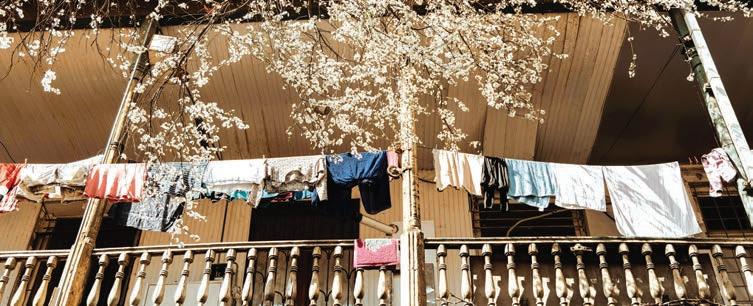
have been slow to adapt. For some, these restrictions reflect an outdated mindset that prioritises aesthetics over practical needs, adding stress to already financially stretched residents.
In the face of rising living costs and environmental concerns, advocates argue for change
As a compromise, buildings could consider alternatives, like communal drying racks or designated drying rooms equipped with heaters and dehumidifiers. Such spaces would allow residents to dry their clothes without
the environmental cost of a dryer and without disrupting the building’s appearance. Still, widespread adoption of these solutions has yet to take off, as the perception around clothes drying remains rigid in many areas.
In the face of rising living costs and environmental concerns, advocates for change argue that practical solutions, such as communal drying areas or designated drying rooms, would benefit both residents and building management. If enough voices push back, Sydney’s high-rise communities might soon see a shift toward policies that prioritise a more sustainable and affordable approach to urban living, encouraging strata corporations to rethink restrictions that no longer align with modern needs.
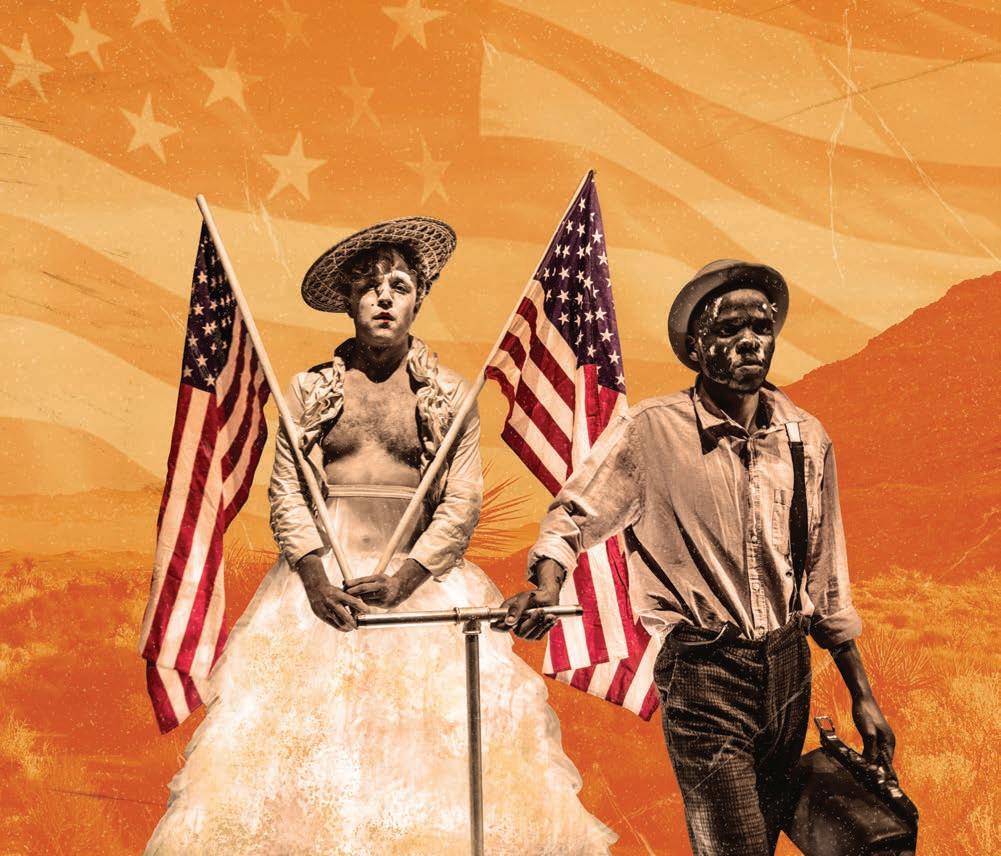
BY CHRISTINE LAI
More than 1,000 jobs could be lost across seven universities due to significant budget cuts announced in recent weeks, raising concerns that the crackdown on international students is pushing the sector to a breaking point.
The federal government’s proposed international student caps, which are expected to take effect next year, will significantly affect university budgets given their strong dependence on overseas student fees.
In August, the federal government announced a historic cap on international student enrolments, limiting them to 270,000 by 2025 for the first time.
Of these places, 145,000 will be allocated to public universities, while 95,000 will be designated for foreign student commencements in the vocational education and training (VET) sector.
The remaining 30,000 spots will be available for other universities and providers.
In NSW, overseas student commencement numbers from 2023 to 2025 will drop at University of Sydney from 12,790 to an estimated 11,900, and at University of Wollongong from 4,042 to an estimated 3700.
Education Minister Jason Clare stated that these changes aim to place the sector on a “more sustainable footing going forward.”
In August, chief executive of Universities Australia Luke Sheehy emphasised that tertiary institutions have become heavily reliant on revenue from international students to sustain operations.
Sheehy told The Guardian that tertiary institutions rely on international student revenue “to fund everything we do in the face of declining government support in recent years – from teaching and research to infrastructure projects and employing people in well-paid jobs”.
With the introduction of caps on international student enrolments, there are serious concerns about the future financial stability of these institutions.
Earlier this month, Genevieve Bell, vice-chancellor of the Australian National University (ANU), warned staff that the financial challenges facing the institution are “substantial.”
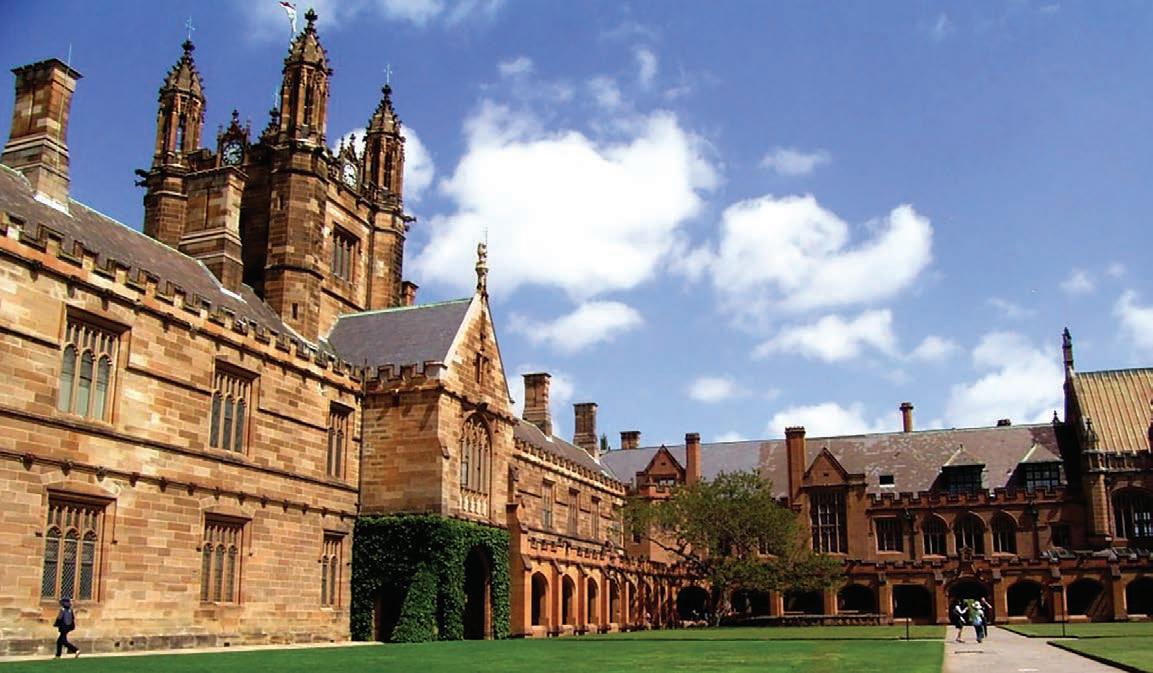
The ANU is projecting a deficit of over $200 million this year, significantly higher than the expected $60 million shortfall, and has accumulated a deficit of more than $400 million from 2020 to 2023.
Bell explained that to address the deficit, ANU would need to reduce recurring operating costs by $250 million over the next 15 months, primarily through cuts in both salary and non-salary expenses.
“This decision has not been taken lightly. All attempts are being made to minimise the number of redundancies; however some job losses will be unavoidable,” she said in a statement.
According to data from the Bureau of Statistics, hundreds of thousands of students contribute approximately $30 billion to the economy each year, making international education Australia’s fourth-largest industry.
In October, universities in Queensland, Canberra, and New South Wales all announced staff cuts as part of significant restructuring efforts to address major deficits.
Last week, the Australian National University (ANU) revealed plans to eliminate 87 positions across three divisions, following an earlier reduction
of 50 jobs in its College of Health and Medicine.
Additionally, the University of Canberra announced 200 redundancies on Monday, with Vice-Chancellor Stephen Parker stating that the institution needs to save $50 million by the end of the year.
“I expect at least 200 staffing positions to be removed this year and in the first half of next year…Some will be found from positions that are or become vacant and contracts that are expiring, but redundancies seem inevitable,” Parker said.
This decision has not been taken lightly…. however some job losses will be unavoidable
Federation University Australia has been the most affected by the cap, with regional Victoria’s largest educational institution allowed to admit only 1,100 overseas students from 2025, a significant decrease from its 2023 intake of 2,306.
Additionally, Melbourne’s indicative cap for new international students is set at 9,300 for 2025, reflecting an 18 percent decrease from the number the University of Melbourne had anticipated for the upcoming year.
Nicola Phillips, acting vice-chancellor at the University of Melbourne, stated that there is no doubt the impact of the proposed cap would be “significant and damaging” for the university.
The cap represents a potential revenue loss of around A$85 million in 2025, with further implications for future years.
In August NTEU President Alison Barnes highlighted that the increasing reliance on foreign income has driven a trend toward “corporatisation” within the higher education sector.
Barnes told The Guardian that the “aggressive pursuit of international student income” has fostered a culture focused on revenue generation, profit margins, and competition among universities for student enrolments.
As universities confront the financial challenges posed by caps on international student enrolments, the looming job cuts jeopardise staff stability and morale.
More campuses are expected to follow suit with job cuts as they seek to retain their business models amid these pressures.
The federal government will have two weeks to pass its student cap bill when Parliament reconvenes in November.
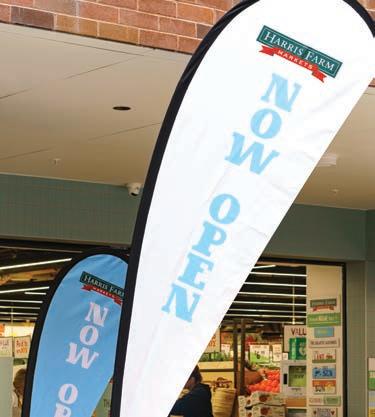
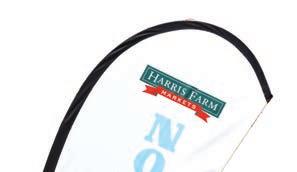
Aplump stone fruit and berries, aromatic herbs, veggies so fresh and fragrant it feels like you just plucked them from the plant yourself. Harris Farm also employs an ‘Imperfect Picks’ program, to reduce produce that is perfectly edible and delicious, but not quite aesthetically perfect, from going to waste.

t the new Harris Farm Markets in Redfern, you’re stepping into a food lover’s paradise.
Around the corner from the vibrant centre of Redfern, and just a stone’s throw from inner-city neighbourhoods and the gaybourhoods of Surry Hills and Darlinghurst, the store feels perfectly suited to anyone who seeks freshness and indulgence in their everyday shopping.
Harris Farm has been a beloved name in Australia for over 52 years, and for good reason. Family-owned and passionately committed to providing the best for their community, it’s a place where local produce, ethical sourcing, and Aussie seasons are celebrated.
As you walk through the Redfern store, you truly see these values in every aisle. It’s not your standard supermarket experience; instead, it has the warmth and charm of a bustling local market. My weekly grocery shop used to be a chore I dreaded — and then I discovered Harris Farm, and now it’s one of my favourite things to do.
The first thing you see is the abundance of fresh, colourful produce;
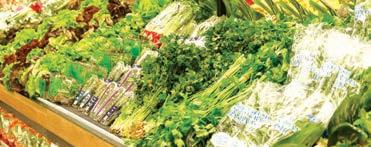

I recently invited a few of my closest friends around for a dinner party — and went straight to Harris Farm to get everything I needed for a spread to impress. Their selection of more than 500 cheeses — from a creamy burrata or a punchy aged parmesan, and everything in between! — helped me create a cheeseboard my friends raved about all night. Over pre-dinner drinks, we gorged on a freshly baked Cob loaf from in-house Infinity Bakery, filled with the freshest ricotta and spinach,
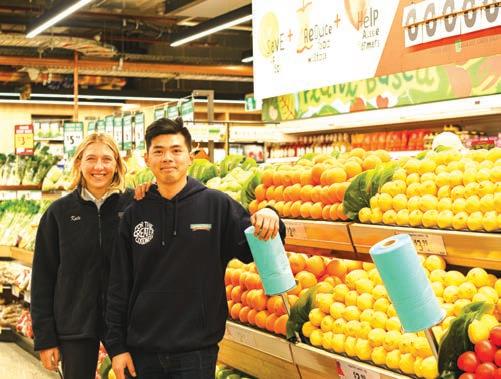
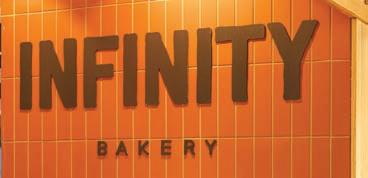
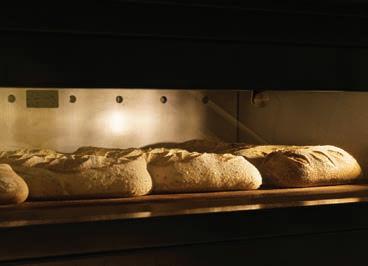
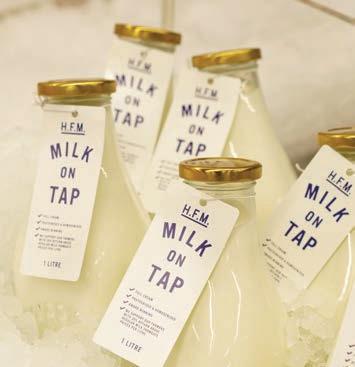
and a diverse charcuterie selection.
Then for a simple but indulgent dinner — baked salmon fillets served with fresh greens. Picking the perfect seafood can make or break any special occasion, but luckily the team at Harris Farm partner Fish In The Family are happy to help you find the perfect choice from their wide selection of fresh, locally sourced seafood.
Another of my favourite unique touches at the Redfern store is the ‘Pour Your Own Milk’ station, where you can fill up on single-herd milk,
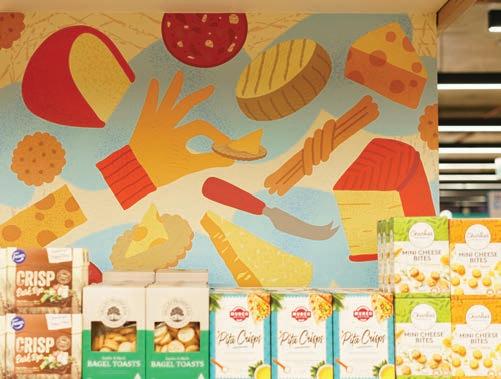


sourced directly from local farms. It’s a super cute way to help reduce packaging waste while supporting local farmers. Ensuring our farmers are supported and valued is something Harris Farm dedicated to — they also have the Total Crop Solution initiative, where they purchase entire harvests rather than just the top-grade items. This store truly is a community hub for neighbours, locals, and visitors — there’s always something to see or do, like cooking demonstrations, events and tastings that showcase Australian producers.
Harris Farm is offering City Hub readers 50% OFF the Harris Farm delivery pass for the month of November. Use the code CITY50 at checkout
At Harris Farm Redfern, you’ll always find something new to try to indulge your palate and explore the fabulously diverse world of food.
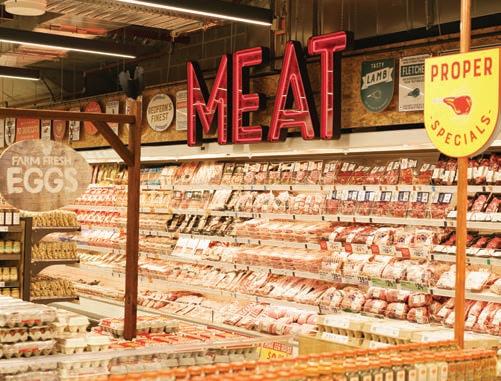
BY MAJA JANC
Medical cannabis usage has skyrocketed in Australia since the drug was legalised for medicinal purposes in 2016.
The industry has now become a half-billion dollar industry, with retailers, pharmacists, and doctors all being able to prescribe and distribute a variety of medical products, such as oils, tinctures, vapes, gummies, or the plant itself.
Across Australia, over 300,000 medical prescriptions for cannabis have been approved since 2016.
The drug is still heavily monitored and regulated when it comes to recreational use, yet there are hundreds upon hundreds of “medical” cannabis companies country-wide. And there are nearly 3000 approved providers of medicinal cannabis in Australia, and over 1000 different products for sale on the market.
Some practitioners, and citizens have concerns over the rising popularity of medical cannabis. Some have concerns prescriptions are given out too liberally, while others wonder if screenings conducted with patients before being given a marijuana prescription are comprehensive enough.
One investigation showed that a healthcare practitioner had given out over 12,000 prescriptions over the span of 6 months, which equals to about 90 prescriptions a day, which sounded alarms for the Australian Health Practitioner Regulation Agency (AHPRA).
The pay could certainly entice a medical practitioner to switch to professional script-filler — doctors could earn $120 to even $350 an hour for issuing cannabis prescriptions.
Two of the most common reasons for medical marijuana prescriptions are chronic pain and sleep issues, and more than 100,000 medical cannabis prescriptions were issued for chronic pain in 2023.
But some have concerns that telehealth consultations for cannabis prescriptions aren’t thorough enough or don’t include the whole scope of an individual’s medical history, factors

that could make cannabis ingestion dangerous — even deadly.
Medical cannabis company
“Dispensed” made headlines earlier this year recently after the hospitalisation of one of the company’s clients, and the tragic suicide of another.
The deceased client’s parents complained after the company continued to send medical cannabis to the house, despite the parents indicating on the online health portal that their son had passed.
Two sets of parents are claiming that Dispensed should not have sold marijuana to their respective sons, who both had numerous mental and physical health issues.
Hope for cannabis within healthcare
However, there are many doctors and general practitioners who believe that medical cannabis is very beneficial and can work in tandem with modern medicine.
Phoebe McLeod and her brother, Jim Connell, started their own medical company, Heyday, that is focused on combining conventional medicine with natural medicine after they saw what
positive effect cannabis had on their mother during her cancer treatment.
“Even though we have these potentially bad players in Australia [in the cannabis industry] – doctors who are providing inadequate education to their patients – Australia probably has the most robust and safest medical cannabis program in the world,” said Connell, one of Australia’s most wellknown medical cannabis specialists, to the Sydney Morning Herald
[Medical cannabis] is a relatively new industry… there’s bound to be growing pains
Owner and founder of Australia’s only medical cannabis publication, CannaBiz, Martin Lane, said, “It’s important to remember that this is a relatively new industry, working within a regulatory framework that wasn’t originally designed for it, so there’s bound to be growing pains.”
“There’s also been something of a green rush in other parts of the world which have legalised the medicine, so it
does sometimes attract people who are more interested in making a quick buck than patient welfare,” said Lane.
“But the vast majority of those working in the space are doing so for the right reasons - often because they, or someone close to them, has benefitted from using cannabis as a medicine.”
The Australian Government Office of Drug Control has compiled lists of approved sellers, growers, producers, and manufacturers that they consider “trustworthy” to the public, although there are still hundreds of unregulated and untested sources that might not be considered safe to consume.
Talks on personal cannabis use are also ongoing, despite Premier Chris Minns rejecting calls for decriminalisation in July.
The Minns Government held a fourday drug summit from November 1 — NSW’s first drug summit since 1999, when Sydney was in the midst of the heroin epidemic — which reportedly included discussions about cannabis decriminalisation.
While the media were largely barred from the secretive event, an interim parliamentary report from a NSW cannabis inquiry was released.
Findings from the report are wideranging, but include:
• Cannabis has a range of medicinal purposes, but more research is required to understand the full scope of its potential benefits.
• Prosecution of minor cannabis offences can cause considerable harms to people which is disproportionate to the crime.
• Criminal sanctions for minor cannabis offences do not deter the community from using cannabis.
NSW’s Council for Civil Liberties released a statement, saying the evidence regarding decriminalisation of cannabis is “unequivocal”.
“We urge the Minns government to seriously consider…the findings of the inquiry that supports the decriminalisation of cannabis and the overall move towards viewing drug use as a health issue as opposed to a criminal justice issue,” reads the statement.

Redfern Railway Station, Lawson Street, Eveleigh NSW 2016 Optus Ref: S0457, www.rfnsa.com.au/2016002
1. The proposal consists of upgrading the Optus coverage within the Redfern Railway Station. The works include:
• Reconfiguration of rack equipment within the mobiles room on the station mezzanine level.
• Installation of wall-mounted and cabinet equipment within five locations within the station and surrounding tunnels.
• Replacement of two ceiling-mounted antennas within the station.
• Ancillary equipment and works, or any other necessary activity for the installation.
The proposal will modernise the existing equipment to add Optus 4G (LTE700) and 5G (NR900) to the Redfern Station concourse, platforms and tunnels.
Kings Cross Railway Station, Victoria Street, Potts Point NSW 2111 Optus Ref: S0306, www.rfnsa.com.au/2011004
2. The proposal consists of upgrading the Optus coverage within the Kings Cross Station. The works are split between between linked equipment at both Kings Cross and Edgecliff Train Stations. The works include:
• Reconfiguration of rack equipment within the Optus room at Edgecliff Station.
• Installation of wall-mounted and cabinet equipment within three locations at Kings Cross Station and surrounding tunnels.
• Replacement of two ceiling-mounted antennas and installation of two additional antennnas within the station.
• Ancillary equipment and works, or any other necessary activity for the installation.
The proposal will modernise the existing equipment to add Optus 4G (LTE700) and 5G (NR900) to the Kings Cross Station concourse, platforms and tunnels.
3. Optus regards the proposed installations as exempt development in accordance with State Environmental Planning Policy (Transport and Infrastructure) 2021 based on the descriptions above.
4. Notification is being undertaken in accordance with Section 7 of Industry Code C564:2020 Mobile Phone Base Station Deployment.
5. Members of the public may obtain further information on the proposals, and we invite you to provide written comments. Further information and/or comments should be directed to the Optus representative c/- Elliot Nelson, Catalyst ONE Pty Ltd; phone: 02 4022 9533; email: c1-consultation@bsa.com.au and post: PO Box 1119, Crows Nest NSW 1585 by 5:00pm 29 November 2024.

Chamberlains Law Firm is looking for witnesses to come forward to provide information pertaining to allegations of physical and/or sexual abuse at Cranbrook School, Bellevue Hill.
At Chamberlains Law Firm, we are dedicated to assisting people impacted by institutional abuse across Australia.
We particularly wish to speak with any former students and teachers who may be able to assist with enquiries in relation to allegations of sexual and/ or physical abuse at Cranbrook School.
All information will be treated as confidential.
If you can assist with any information in relation to Cranbrook School, please contact Sarah Hayman on sarah.hayman@chamberlains.com.au or 02 6188 3600
265 Chalmers Street Redfern NSW 2016 www.rfnsa.com.au/2016004
1. The proposed upgrade to the rooftop facility consists of the addition of new 5G/4G equipment and associated works as follows:
• Installation of six (6) new 5G antennas (each no longer than 0.79m) on new mounts
• Replacing (3) existing 4G antennas with three (3) new 4G antennas
• Installation of twenty-one (21) new RRUs on new mounts
• Installation of associated ancillary equipment at the existing facility and within the equipment shelter
2. Optus and Vodafone regards the proposed installation under exempt development from Local & State Government approval in accordance with State Environmental Planning Policy (Transport and Infrastructure) 2021 based on the description above.
3. Notification is being undertaken in accordance with Section 7 of Industry Code C564:2020 Mobile Phone Base Station Deployment
4. Members of the public may obtain further information on the proposed work, and we invite you to provide written comments about the proposal. Further information and/or comments should be directed to Optus/Vodafone’ representative: Matthew Tang, Ericsson, phone: 0481 097 308; email: matthew.tang@ericsson.com by Friday 29th November 2024.

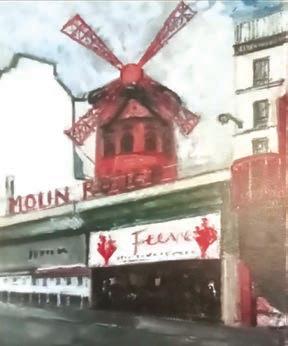
2nd December 2024 - 15th December 2024 Opening Sat 7 Dec 4 pm, Artist Talk 14 Dec 4 pm
French champagne, French food, French music on the opening night.
French fancy dress (but not compusury).

GALLERY, 1/259 Riley Street, Surry Hills










In the eight short years since two Cambridge University students first conceived their idea for a musical about the wives of Henry VIII, Six: The Musical has become a phenomenon.
RITA BRATOVICH
Six: The Musical has been seen by over 3.5 million people worldwide, had over 32 million views on TikTok, and the cast recording has been streamed over 1 billion times. It’s now in its third Australian national tour since 2020.
“It is uplifting, because it is smart, because it is a history lesson wrapped up in a pop concert,” says co-producer, Louise Withers.
Six is a unique kind of musical for a number of reasons: it’s 75 minutes long with no intermission; there are six leads with no other cast or ensemble; it’s virtually all told through songs with very little dialogue in between; it’s performed in a kind of concert setting.
“It’s what I call ‘bite-sized theatre’. It’s theatre where you can go, and at the end of it you’re totally satisfied with your experience, but you can still go to dinner,” says Withers.
All this might make Six sound like just a bit of frivolous fun, but it is so much more than that. Writers Toby Marlow and Lucy Moss were inspired after seeing a documentary about the six wives of Henry VIII. Realising these women have been misrepresented for 500 years, they decided to give each of them a chance to speak (and sing) for themselves.
“Each of these women is telling what they were thinking, and who they were and how their life changed when they became the wife of Henry VIII,” explains Withers.
Six is peppered with hilarious banter, witty lyrics, and ripper pop tunes, but it is also tempered with moments of solemnity. These women — Catherine of Aragon, Anne Boleyn, Jane Seymour, Anna of Cleves, Katherine Howard, and Catherine Parr — may have all been queens, but their lives were far from fairytales.
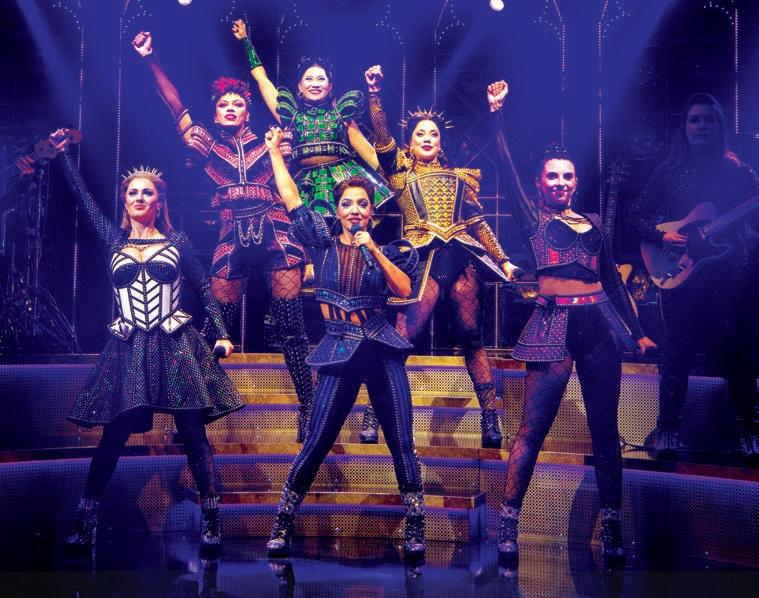
but Hunter believes Jane has been misrepresented by historians.
“What we always come back to is the humanity of these women, you know, these women were not made-up, they were real. And so we need to honour that. Although there is comedy in it, there are some serious things and we need to lean into the truth of that.”
Six is 75 minutes of high-intensity, non-stop, full throttle singing and dancing, all in heavy, bejewelled medieval costume.
Giorgia Kennedy just completed a run in & Juliet, a pop-infused, Shakespearean-based musical, which is perfect prep for Six. Kennedy is new to the cast, stepping into the velvet brocade shoes of Catherine Parr.
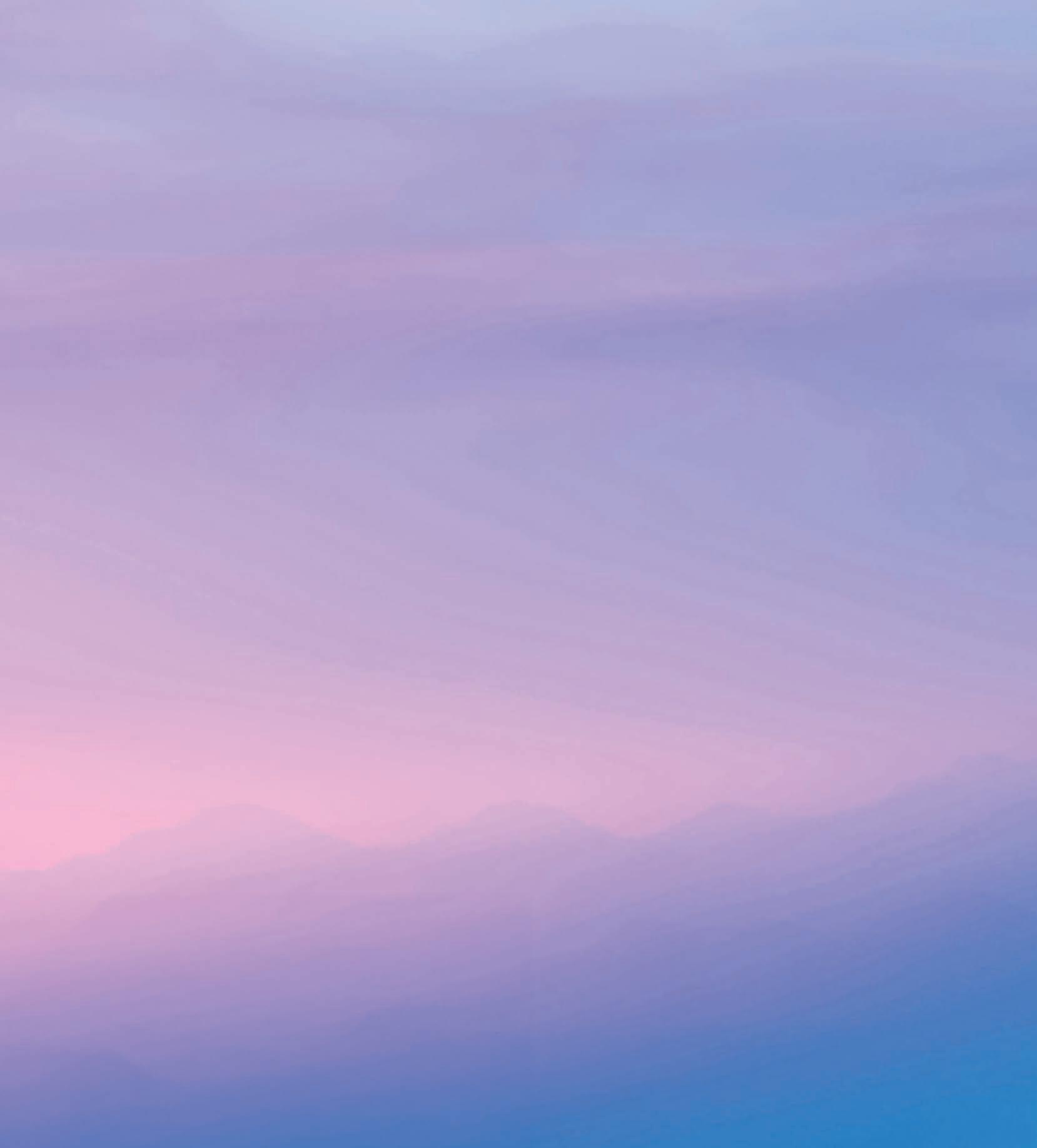
is uplifting; it is a history lesson wrapped up in a pop concert
The all-female cast, backed by an all-female on-stage band, gives Six a distinctly ‘women power’ energy that ignites the entire room.


The characters in Six frequently break the fourth wall and interact with the audience, so each performer needs to have a certain degree of confidence and charisma. And, of course, they all need to get on with each other. Effectively, you’re putting together a medieval girl band.

Loren Hunter is one of two performers reprising their roles from previous productions (Chelsea Dawson is returning as Katherine Howard).
The historical narrative around Jane Seymour is often disparaging,
“I have become an absolute Tudor buff. I now am so fascinated with Tudor history, I probably know the most about Cathy Parr in Australia. I’m probably her number one fan,” says Kennedy.
“She was absolutely remarkable. Incredible, incredible woman.”
Each queen is different and is modelled around contemporary pop icons.
The all-original songs in the show vary in style according to the queen who is singing, ranging across RnB, rap, dance, ballad, rock and pop.
For the audience, there’s at least one queen or a style of music they can relate to.
“It is short and snappy but it’s got those underlying themes. It’s a fun show that you can come to again and again and again and learn something new every time,” says Kennedy, summing up why Six: The Musical continues to reign supreme.
The City Council recently announced plans to transform Sydney into a true 24-hour city rivalling the night cultures of Berlin, New York City and Tokyo.
Have we heard it all before? Well yes — as recently as four years ago, when the then-Minister for Tourism stated:
“To compete on the world stage… we must have a fantastic after dark experience and 24-hour amenities for all to enjoy, live music, and increasing public transport options. At its core, our objective is to create a 24-hour city that is world renowned for its vibrancy, diversity, safety and access to amenity right throughout the day and night.”
The current proposal would see the designation of a number of 24-hour entertainment precincts, embracing parts of the CBD and the usual suspects like Kings Cross, Newtown and Oxford Street in Darlinghurst.
The Council is quick to point out that it would not only be encouraging extended drinking and dining, as well as
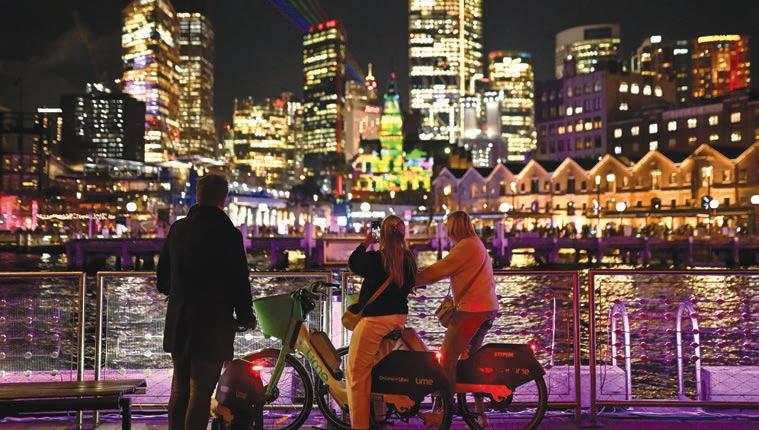
shopping and other activities that are traditionally curtailed before midnight.
We have come a long way since the infamous days of the ‘six o’clock swill’, when pubs closed their bars at 6pm. But just how the proposed entertainment precincts would work is yet to be fully explained, and already
there are cries of opposition from residents.
The chaotic spread of the CBD and Sydney’s sprawling suburban landscape also presents problems.
Admittedly the ability now to run 24hour Metro trains could allow punters to party into the wee small hours and not
be at the mercy of inflated Uber prices getting home.
Plus, simply anointing a certain area as a dedicated late night precinct is no guarantee new businesses will set up shop or established ones will want to stay open longer.
There’s no doubt Sydney could do with some creative thinking when it comes to our night time culture, but whether we ever become a real 24-hour metropolis raises a lot of cynicism.
The cities around the world that have developed a 24-hour culture have done so over many years, with multiple factors involved. Here in Sydney, government and council regulations and red tape have often worked against late night enterprise — to turn around and think we can artificially create a 24-hour city is the stuff of pipe dreams.
Perhaps we should listen to the person who texted into an ABC radio program last week on this, simply saying: “Nothing good happens at 3am.”


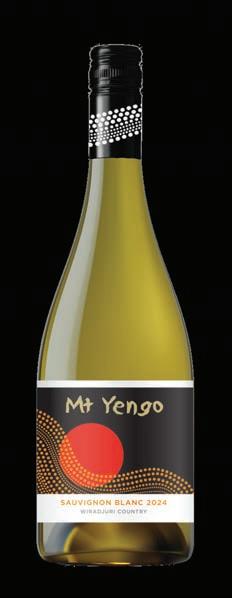


BY RITA BRATOVICH
The Female of the Species was written in 2006, and while elements of it are a little tarnished with time, it still stands up as a biting and hilarious critique on performative feminism. The proof is the current production at the Old Fitz.
To say Joanna Murray-Smith has a way with words is as gross an understatement as saying Venus Williams is good at hitting tennis balls. Murray-Smith is not only prolific, but she is consistently witty, inventive and thoroughly entertaining.
Directed by Erica Lovell, this energetic reprise of Murray-Smith’s now classic feels fresh and nostalgic at the same time. Margot Mason (Lucy Miller) is a renowned
MARK MORELLINI
An eye-opening music vid for the Sniffers’ raucous new album (See p.21)

feminist writer, very confident in her own opinion, quite indifferent to the thoughts and feelings of anyone else.
We find her in a summery cottage, sitting at a desk in front of a laptop, thinking out loud. She is being pressured to produce another book, but, having set her bar high with previous ground-breaking best sellers, she is incapacitated by writer’s block.
Enter Molly Rivers (Jade Fuda), a fawning admirer who gushes shamelessly at her hero. But we learn that Molly may not be quite the adoring fan she seems, confirmed when she pulls out a gun and handcuffs Margot to her desk.
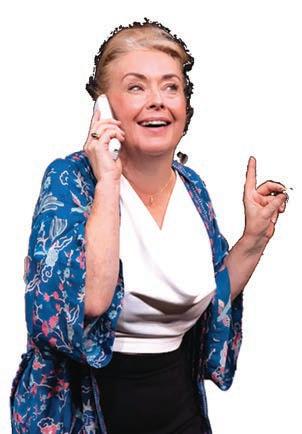
It seems Margot’s books may have had far too strong an influence — a negative one — on Molly’s mother and Molly herself. Molly threatens to kill Margot, but decides to go to the kitchen for a snack first.
A parade of characters then start to join the farce, beginning with Margot’s disappointingly domesticated daughter, Tess (Lib Campbell).
Tess is tired and prickly and seemingly having a nervous breakdown. Her obsequious and clueless husband, Bryan (Doron Chester), soon arrives. The dialogue, plot and gestures become frenetic and

he biggest show in the world is about to arrive in Sydneyl After sellout seasons in London, Paris and Madrid Eurovision On Tour will be performing in Brisbane, Melbourne and Sydney.
What makes this such a unique experience is that this is the first time since the Eurovision Song Contest began in 1956 that the show has been taken on the road.
There will be 18 Eurovision legends taking to the stage, plus a touring special display of costumes worn by Eurovision’s top talent — including ABBA.
Performers joining the Australian tour include Senhit (San Marino), Carola
(Sweden), Destiny (Malta), Esther Hart (Netherlands), Soraya (Spain) and Suzy (Portugal).
The two featured Australian artists who mesmerised international audiences are Brisbane songstress Dami Im and Sydney’s Silia Kapsis. Kapsis, who grew up in Sydney but currently resides in Greece, said she is excited to be returning in Australia.
“I have missed Australia and can’t wait to come back and perform for you all.
Eurovision On Tour’s aim is to bring the music and the Eurovision artists closer to the fans. I’m proud to be a part of it and Australia is going to love it!”
Eurovision On Tour, November 17 at the Enmore Theatre
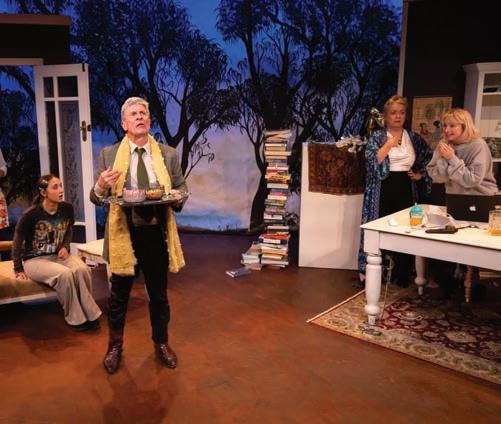
outrageous, as the characters' arcs get tangled together.
The jokes fly fast and without warning, as do the occasional gunshots into the air. There is a commedia dell’arte feel to the slapstick shenanigans with some sneaky social commentary thrown in. And at the centre of it all is Chekhov’s gun.
The Female of the Species, on at The Old Fitz until November 23.
BY JOHN MOYLE
Stella Sarah Miles Franklin is one of Australia’s most famous writers and feminists, about whom we know almost nothing.
Based on Franklin’s diary entries, Kingdom of the Eucalypts is presented by Moira Blumenthal Productions.
Written by Alice Spigelman, the play examines a little known interwar period of Franklin’s life when she has returned to Australia after time in the UK and The USA seeking to replicate the success of her book My Brilliant Career, first published in 1901.
“She never gave up, even after her first book was such a success, her next book wasn’t published for 30 years and she kept on the path.”
As Miles’ career is floundering, so is her relationship with her mother.
“She is an extremely disappointed woman,” Alice Livingstone, who plays Susannah Franklin, said. “She wanted [Miles] to get married and lead a comfortable life, (but) she also bitterly resents how the family were portrayed in ‘My Brilliant Career’.”
The backstory of the life of Miles

Franklin is as interesting as any of the seventeen books that she wrote during her long life, and will make this production a must see event. Kingdom of the Eucalypts is on at the Bondi Pavilion, 30 Oct to 17 Nov.
BY JOHN MOYLE
The long line of formidable Australian creations in Sydney theatre this year continues with the opening of Yentl at the Sydney Opera House Playhouse for a limited season.
Though a modern interpretation by Melbourne-based writer/director Gary Abrahams, it remains formally rooted in Isaac Bashevis Singer’s 1963 short story, Yentl the Yeshiva Boy.
Abraham’s intention was to reexamine the original Yiddish text carefully and give them the freedom to explore the concepts of feminism, gender fluidity, bisexuality and love contained in the book and look at them again through a 21st century lens.
The story arc concerns an intelligent young girl Yentl (Amy Hack) growing up with her recently widowed rabbi father (Evelyn Krape) who expresses a desire to learn the Scriptures, just like the boys and men at the yeshiva (religious school).
The father acquiesces to Yentl desires for knowledge and against all laws and surreptitiously begins teaching her the beauty and complexity of the various religious books.
After he dies Yentl assumes the identity of a boy, and crossing a river on the journey, symbolising God’s life-giving presence, she arrives at a near-by town where she/he as Anshel astounds the class with their knowledge and debating ability.
Yentl’s journey is also accounted for by Evelyn Krape’s brilliant performance of a Greek chorus of one as a yeytser ho’re, an introduced figure who narrates while guiding Yentl with various tricks, doubts, confusion and enabling.
Paired with another young scholar, Avigdor (Nicholas Jaquinot), who eventually tells Anshel of a betrothal to Hodes (Genevieve Kingsford), which ends when her parents return the marriage contract.
Avigdor has the idea that Anshel should take his place with Hodes but
after a night of drinking finds himself desiring Anshel.
Anshel eventually meets Hodes and they soon find themselves married, against Anshel’s initial reluctance and Hodes’ conservative religious and cultural views.
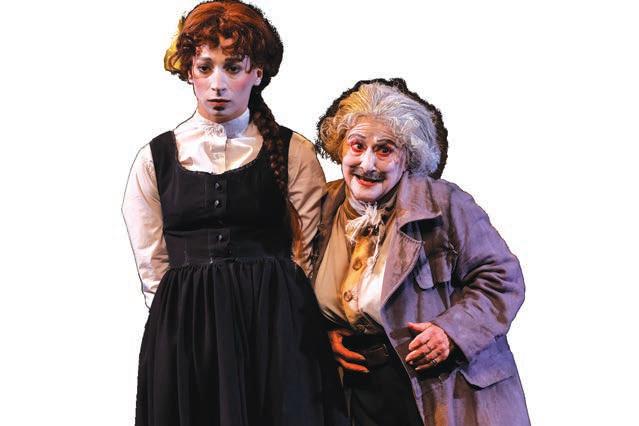
they live in a society which restricts who you can marry and who you can be in love with and there is no room for homosexuality,” Hack said. “Its a chaotic romantic triangle.”
This becomes the part of the play where the discourses on love and
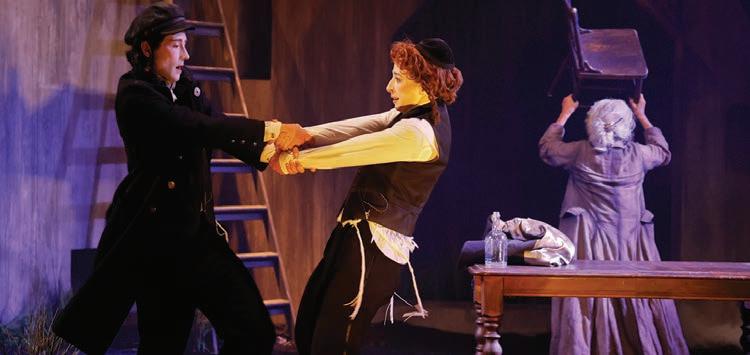

This furthers Anshel transgressions as he/she performs a ritualistic act of love-making on the wedding night.
“There are themes that exist in the story when Yentl plays a boy and he/ she meets Avigdor and they have a strong sexual attraction with Avigdor not realising that he( Anshl) is actually female.”
identity come to the fore, and we are on tenterhooks waiting to see how the various situations will be resolved.
Gary Abrahams and co-writers Galit Klas and Elise Hearst have truncated a story of epic scope as we cover Yentl’s transformation and transgressions across two locations and a short time-frame.
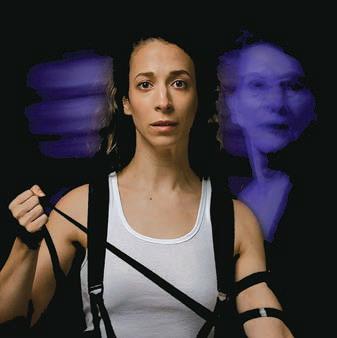
“There are queer subjects as Yentl is dressed as a boy and forms a beautiful relationship with Avigdor, and then you have Hodes, who has magnetism, and
The new text is fast, witty and modern and does not shy away from exposing the often overlooked sub text of the original book and 1975 play.
“This writing of Yentl is significantly different from the 1975 play cowritten by Singer, for a start it is with only four actors, whereas the original Broadway play had a cast of 24,” Gary Abrahams, co-writer, director said.
“When we were creating this, we
went back to the original story and we noticed in the Yiddish there was a bit more allusion to a much more complicit and darker spirit and struggles within the character of Yentl.”
In directing Abrahams shows a command of the subject matter without it becoming prosaic, while always respecting and loving his characters, whatever their foibles are.
As Yentl/Anshel, Hack is riveting as she transforms from an inquisitive young girl to a formidable and complex young person who is capable of considerable intelligence and moral discourse – while also being the source of deceptions and transgressions.
Nicholas Jaquinot is a likeable Avigdor with whom we can empathise even when his character is being gormless.
Evelyn Krape is physically agile and multi-faceted as Yentl’s father and as The Figure, who guides Yentl and us through the many twists and turns of the story.
As the love interest and hapless bride, Genevieve Kingsford’s Hodes displays the beguiling beauty of someone worthy of such attention while also displaying a fragility in her character, even though she holds the most conservative views in the play.
Dan Barber’s German Expressionistic set of double-sided flats serves brilliantly as a backdrop for Yentl’s first home and later the yeshivah, while serving as a surface for Rachel Burke’s sepia toned lighting.
Max Lyandvert has held back with music and sound design which helps to make it more dramatic when it is introduced for weddings and drinking sessions.
On Yentl’s opening night in Sydney the audience, whether Jewish, Goy, straight, bi, gay, lesbian or transgender rose as one to their feet for a standing ovation, showing that this Yiddish tale has broad appeal.
Yentl opens from 17 October 2024 at Sydney Opera House’s Playhouse.
BY CHLOE SARGEANT
Sydney Festival has dropped their incredible program for 2025. The almost month-long international arts festival offers an opportunity to rediscover the city differently.
Sydney Festival also offers an actionpacked free program for 2025, ensuring a truly accessible and expanded summer of art for all. Throughout January, Sydneysiders and visitors will once again be enticed to take part in an exhilarating summer of art across 23 days of storytelling, knowledge sharing and cultural immersion.
and over 50 free events inclusive of more than 12 nights of free live music, Sydney Festival 2025 amasses an expansive roster of diverse local artists and renowned international names this summer.
Across the city, Sydney Festival will play host to some of the hottest about shows of the season, from the highly anticipated World Premiere of Siegfried & Roy: The Unauthorised Opera and a deeply personal night of storytelling from Sydney icon William Yang, to an exciting new dance work by celebrated Australian choreographer Stephanie Lake, an eclectic run of live music gigs at
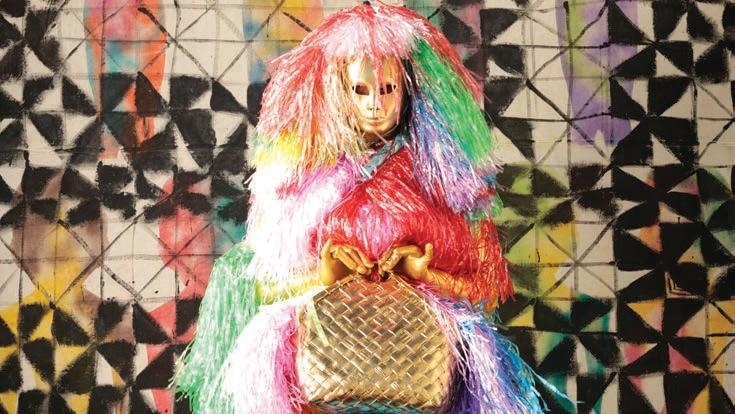
Festival Director Olivia Ansell, delivering her fourth and final festival line-up, said: “Sydney Festival has long held summer’s cultural pulse and this year is quite the heartbeat. Stories of Oceania, destiny and what we leave behind through to bold explorations of utopia and dystopia, Sydney Festival 2025 promises an exhilarating and thought-provoking journey through the arts with exceptional talent at the reins.”
“Sydney Festival has timing on its side, delivering a burst of cultural expression and artistic activity from January 4 when the city is largely off work and ready to celebrate and explore during the long hot days and nights," said The Hon. John Graham, Minister for the Arts. Featuring over 130 shows and events, including 22 World Premieres, 24 Australian exclusives, 43 locations,
the ACO On The Pier, and a blockbuster roster of powerhouse cabaret featuring Christie Whelan Browne, Rachael Beck and Katie Noonan.
Step inside the Darlinghurst Courthouse for a sensational 20th century murder trial inspired by one of Sydney’s most titillating scandals in A Model Murder, or visit the Wild West with Danish visionary Tue Biering’s breakout Edinburgh Fringe hit Dark Noon, staged at Sydney Town Hall. Over three weeks in January, a new gathering space at Barangaroo Reserve will be home to much of the free and community Blak Out program. This program will see conversations, workshops, soundscapes and performances.
Sydney Festival runs 4-26 January 2025. You can see the full program at sydneyfestival.org.au
BY MARK MORELLINI
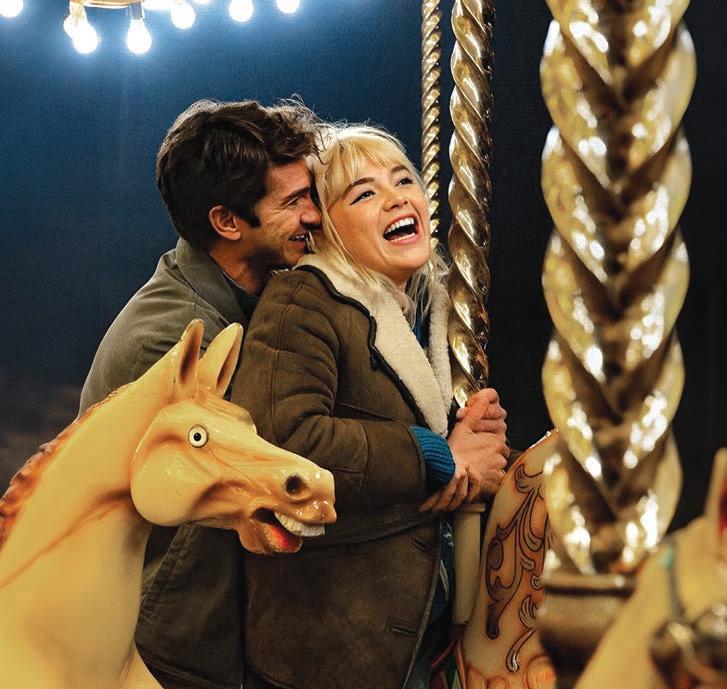
This year the annual British Film Festival has a record 36 films for audiences to choose from, which means this is the biggest program ever presented. There are comedies, dramas and documentaries, many of which are Australian premieres.
“There is a very even mix of both commercial and specialised titles in this festival. Some films will be major commercial releases in the first quarter of 2025,” festival curator Kim Petalas enthused.
The opening night film is Blitz, an epic World War II drama about the plight of a mother who is desperately searching for her son. The film stars Academy and BAFTA Award-nominee Saoirse Ronan.
Festival attendees may enjoy a G&T or mocktail on arrival at the closing night Australian premiere of We Live In Time which stars Florence Pugh and Andrew Garfield. This is regarded as one of the most romantic films in recent years.
Lovers of classic cinema should enjoy a selection of five historical dramas that have been restored in 4K. Popular choices include Heat and Dust (1983), The Lion In Winter (1968) and Henry V (1989).
“The 4K restoration gives audiences a rare opportunity to see
these classic films fully restored and on big cinema screens. It is a totally different experience watching these very cinematic films as they were meant to be seen,” explained Petalas.
British religious drama Conclave should prove to be a hit at this year’s festival. Ralph Fiennes stars in this thriller which surrounds the secretive process of the selection of a new pope.
“This is a riveting dramatisation with amazing performances from a stellar cast and it should have mass appeal. I believe patrons will really enjoy this enthralling film.”
The screening of classic A Room With A View honours the late iconic actress Dame Maggie Smith, who passed away earlier this year.
When asked why this year’s British Film Festival should appeal to all audiences Petalas was quick to respond.
“The festival has mass appeal this year as there is something for everyone. From traditional British period films, comedies, love stories, dramas to Rock n Roll concert films, restorations and documentaries. The festival is very diverse, and audiences should discover that special film they connect with.”
The British Film Festival runs in venues across Sydney from November 6 - December 8.
BY MAJA JANC
The Yours and Owls Festival has announced their venue change and an addition to their impressive lineup.
The festival’s 10 year anniversary is ramping up to be the event’s best year yet; it’s come a long way since starting out in a little arts cafe in Wollongong. Due to an unexpected date change, Yours and Owls have had to change their venue from their usual spot, the University of Wollongong’s campus, to the Wollongong Foreshore, South Beach, for an exciting beachfront event.
The event’s new venue is closer to the CBD, allowing for easier transportation to the venue, access to the beach, enjoying local businesses, closer accommodation, and better proximity to the after-parties.
The festival will now take place on
Saturday and Sunday, March 1 and 2, 2025.
Joining the crew of international and local talent is Australian country artist Brad Cox, whose chart-topping anthems are a welcome addition to the rest of the talented performers.
The ARIA-nominated, Golden Guitarwinning singer from Jindabyne has not yet had his precise performance date confirmed.
The festival has not yet confirmed the entirety of the lineup, but so far, it seems like Yours and Owls attendees will have a fantastic time in Dharawal Country, with four stages, delicious food, ambiance, chill-out spaces, bars, arts showcases, and vibes.
The lineup has a very diverse range of genres, from US rap legend Denzel Curry to UK indie rock band the Kooks
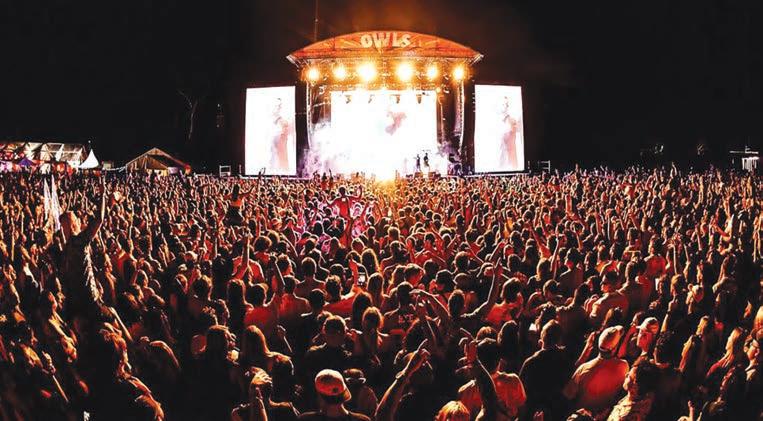
to Aussie bands Hockey Dad, The Veronicas, The Jungle Giants, and even includes the iconic American rock band Goo Goo Dolls.
The headliners are Fontaines D.C., Denzel Curry, The Kooks, and Goo Goo Dolls.
Here's the Yours and Owls lineup so far: Elderbrook, Hockey Dad, Honey Dijon, JPEGMAFIA, The Jungle Giants, Orville Peck, Peach PRC, Salute, The Veronicas, Allday, Babe Rainbow, Brad Cox, Coterie, Cyril, Dice, The Dreggs, Frankie Stew & Harvey Gunn, Grentperez, Isabel Larosa, Magdalena Bay, May A, Mark Blair, Pond,
Richy Mitch & The Coal Miners, Sam Tompkins, San Cisco, Slowly Slowly, Sycco, Wunderhorse, Battlesnake, Bean Magazine, Bodyjar, The Belair Lip Bombs, C.O.F.F.I.N, Crocodylus, Keli Holiday, Kitsch en Boy, Le Shiv, Miss Kaninna, Nick Ward, Ra Ra Viper, Satin Cali, Total Tommy, Y.O.G.A (and more TBA) Yours and Owls 2025 will be 16+ in 2025; all people aged 16 + 17 must be accompanied by a parent or guardian at all times You can find more information about Yours and Owls festival at yoursandowlsfestival.com.au.
BY JAMES BALE
Pioneers in Australian pub and punk rock revival Amyl and the Sniffers have released their newest album Cartoon Darkness
This is the band's third album and in traditional punk fashion explores themes of freedom and not being tied down to societal norms. However, these themes are explored on a more personal level.
The opening track Jerkin focuses its attention on body image and online commenting.
In line with this, the band have released a rather interesting music video for the single. The video consists of the vocalist Amy Taylor singing in a bikini with brief cuts to naked imagery of all kinds. The video is censored on YouTube but can be viewed uncensored on the band's website.
The video’s director John Angus Stewart explains that the video is a love letter to body positivity: “This is why we wanted to strip away the artifice and examine the body in an open, conversational way”, he stated.
Beyond the music video, the four singles of the album both encapsulate the iconic punk sound as well as expand upon it incorporating a wide range of influences.
The aforementioned Jerkin is the closest to that raw punk sound with guitar and bass
both using heavy distortion complimented with a dance like beat from the drummer Bryce Wilson.
The guitar work from Declan Martens is arguably the highlight of the tracks. His chords riffs are clean with a galloping strumming style. Martens was able to produce some solid solos, including Chewing Gum which was a mixture of traditional punk sound and Eddie Van Halen speed and intricacy.
Contrastingly, the third track Big Dreams has Martens begin with a mellow riff using single notes which slowly turns into power chords. The track is less punk and more post-punk, and the guitar playing highlights this. The guitar reverts from distortion to clean tone with more explorative guitar playing with techniques such as sweep picking and high bends.
The final track U Should Not Be Doing That pays tribute to Australian rock with a melody that is a mixture of The Angels and Midnight Oil. The song is highlighted by Gus Romer’s bass riff, which drives the melody of the song with a high amount of treble.
To celebrate release of Cartoon Darkness, Amyl and The Sniffers have also announced an Australia and New Zealand tour for early 2025.


BY MARK MORELLINI
Returning home from a school reunion, single mother Sylvia (Jessica Chastain) is followed by Saul (Peter Sarsgaard), a man who she met momentarily that night.
Slow-paced but compelling viewing, what follows is the story of a friendship which kindles between two people, a woman who is a recovering alcoholic harbouring a dark family secret and a man who is suffering from degenerative memory loss, hence early onset dementia.
Jessica Chastain is memorable in
the role of Sylvia – she understands this character and the plight she is experiencing. Peter Sarsgaard who rose to prominence playing villainous roles, takes a break from playing the bad guy and warms audiences with his portrayal of Saul.
Memory is a movie which won’t make a ripple at the all-important box office and may be lost amongst the more popular blockbusters, however it’s a movie that should arouse conversation and raise awareness to mental illness and the effects of dementia.
1/2

BY MARK MORELLINI
Aman suffering from facial differences from genetic condition
Neurofibromatosis participates in a new experimental drug trial. He transitions into a different man, discarding his true identity and taking on a new one to escape the loneliness and nonacceptance from society.
Changing faces guarantees anonymity, but does it certify a new and positive attitude promoting a better and happier life?
That’s what struggling actor Edward Lemuel ultimately learns,
when he auditions for an offBroadway production based on his previous life.
Excellent performances are delivered from the entire cast, notably Adam Pearson who lives with Neurofibromatosis in real life.
A Different Man leaves audiences to ponder, do we all put a mask on to get through each day of our lives?
The message resonates to ensure that we all make the most of what we have in life, as hiding our true identity under a mask may not change who we really are.
1/2
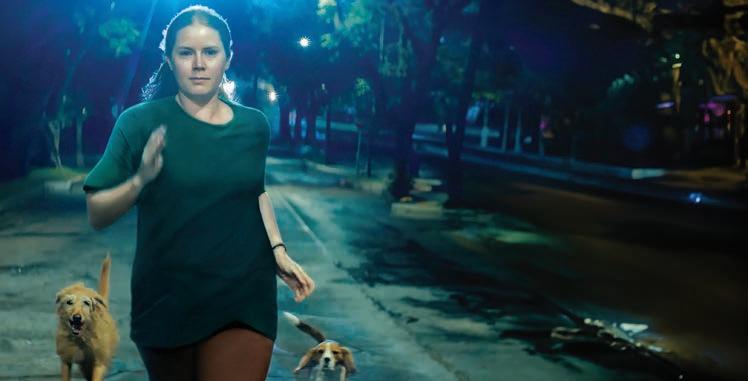
BY MARK MORELLINI
Simply referred to as ‘mother’, Amy Adams is an artist whose husband decides for her that she’d best become a stay-at-home mother.
He’s always away with work, but constantly reminds her that she should be grateful to be at home with the baby. She comes to the realisation that she is the housewife she never wanted to be.
“I feel like I’m stuck in a prison of my own creation. I’ve become a person I don’t recognise!” says mother.
With magical realism style, she
feels her canine teeth changing and a heightened sense of smell. She believes she’s unleashing her primal urges and frustration at motherhood by transforming into a wild dog – a ‘nightbitch’. Does everybody have an inner animal just waiting to be unleashed?
Nightbitch is a psychological journey through motherhood. It explores a woman’s sense of losing herself as an artist, and as a woman. It’s dirty, tense, funny, wild, unique, bizarre and yet very refreshing.
1/2
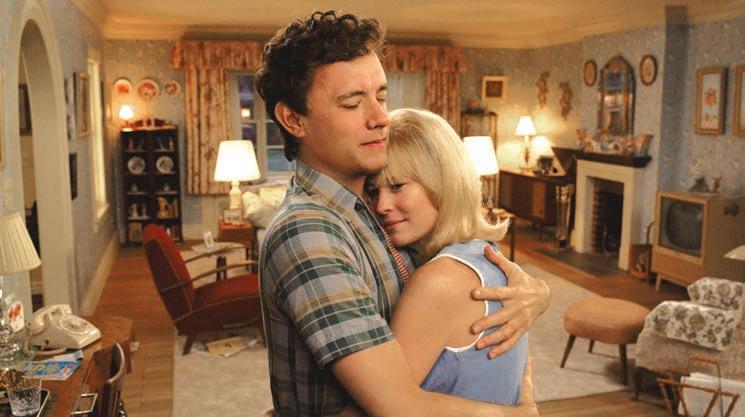
BY MARK MORELLINI
Moviegoers may be forgiven for believing they have entered the wrong cinema during the mesmerising time-travelling opening sequence of Here, but an inter-generational story of the joys, hopes, loves and losses soon unfolds about the different families who occupied a single house across a century.
It’s an emotional cinematic journey, and a non-linear style of storytelling is skilfully utilised to highlight the advancement of time.
Director Robert Zemeckis, Tom
Hanks and Robin Wright finally reunite in Here, 30 years after working on Forrest Gump. The film utilises a deageing process to return Hanks and Wright to their teenage years, then ages them through to their eighties — it’s worth the price of a ticket alone just to watch this process on screen. This is a unique and artistic piece of filmmaking; a minor gem. It reflects the change of attitudes and problems of several families through time, and most importantly, delves into the circle of life.
